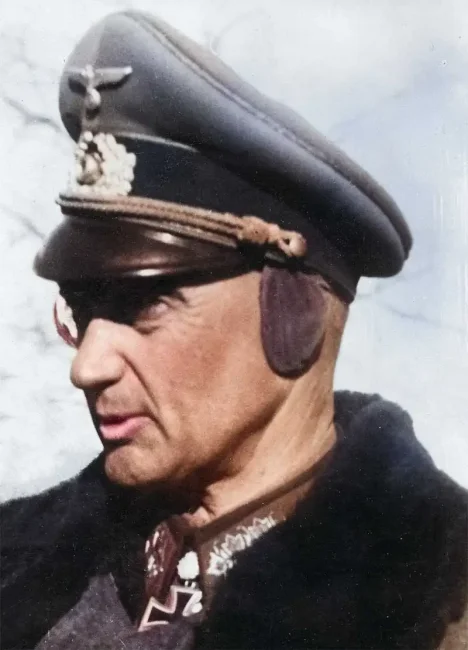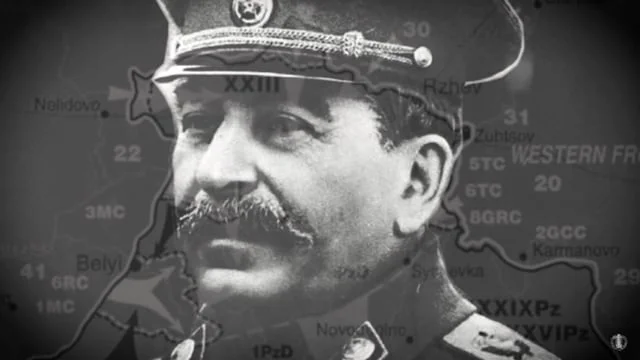- Military History
- Biographies
- Militarians Biographies
- Generalfeldmarschall Walther Model
Generalfeldmarschall Walther Model
The youngest Generalfeldmarschall (Generalfeldmarschall) in the Wehrmacht during World War II
Hitler favored Walther Model, the youngest Generalfeldmarschall (Generalfeldmarschall) in the Wehrmacht during World War II, as a commander. He was a formidable and resolute leader, especially in defensive situations, and received significant recognition during his illustrious career.
Model significantly impacted the latter stages of the war, as the Third Reich's time was dwindling. Nevertheless, he repeatedly rushed from one deteriorating front to another, temporarily stabilizing the situation. Model acquired the nickname “Hitler's fireman” and merits acknowledgment as one of the preeminent defensive commanders in contemporary military history.
Index of Content Walter Model Biography
- Introduction to Walther Model
- The Early Years of Walther Model, 1891-1913
- The Military Life of Walther Model, 1914-43
- World War I, 1914-18
- Service in the Reichswehr, 1919-35
- Wehrmacht Service, 1935-39
- World War II - Poland and France, 1939-40
- World War II - Commander of the 3. Panzer-Division
- World War II - Drive on Moscow 1941
- The Hour of Destiny for Walther Model
- World War II - Saving the Northern Flank 1941-1942
- World War II - Model's Defensive Tactics 1942
- World War II - The Rzhev Meatgrinder 1942-1943
- World War II - Operation Zitadelle, April-July 1943
- World War II - Holding off Operation Kutuzov, July-August 1943
- World War II - Sword and Shield on the Northern Front, January-March 1944
- World War II - The Führer's Fireman, March-August 1944
- World War II - The “Miracle in the West”, August-November 1944
- World War II - Wacht am Rhein, December 1944 to January 1945
- World War II - The Last Measure, February-April 1945
- Walther Model and the Opposing Commanders
- Generals Georgy Zhukov, Ivan Konev, and Konstantin Rokossovsky
- Field Marshal Bernard Montgomery, Generals Omar Bradley and Courtney Hodges
- Inside the Mind of Walther Model
- Walther Models’ Life in Words
Introduction to Walther Model
Confronted by opponents, German forces have historically embraced the notion of Bewegungskrieg (maneuver warfare) as the most effective resolution to military challenges. Clausewitz contended that only offensive operations could yield decisive outcomes and that the inevitable conclusion of Stellungskrieg (positional warfare) was defeat; thus, German military tradition favored offensive tactics. The unsuccessful execution of the Schlieffen Plan to secure a swift victory in France in August 1914 compelled the Imperial German Army to adopt a defensive posture for the subsequent four years.
Even though the German Army believed in Bewegungskrieg, they were exceptionally good at defense on the Western Front. They coordinated artillery, machine guns, barbed-wire barriers, and multiple switch lines very well to slow down, kill, and eventually stop strong Allied offensives in Flanders, the Somme, and Champagne. In the autumn of 1916, the German Army formalized the insights gained from these effective defensive operations into the doctrine of “elastic defense.” In contrast to earlier defensive doctrines that prioritized a rigid linear defense with concentrated manpower, elastic defense distributed forces across three successive zones, thereby reducing vulnerability to extensive artillery bombardments. Despite German military strategy's adherence to offensive solutions and tactics, elastic defense emerged as an effective doctrine in 1917-18.
During this period, a young German officer named Walther Model directly observed the efficacy of elastic defense at both tactical and operational levels—an experience he would subsequently leverage as one of the Wehrmacht's most significant operational commanders in the ensuing conflict.
The 1921 operations manual of the post-war Reichswehr preserved elastic defense and revised it in 1933 to include anti-tank defenses. However, as Germany's new leader, Adolf Hitler, did not anticipate engaging in defensive operations, both the Reichswehr and the Wehrmacht reverted to an offensive mentality, marginalizing elastic defense. The aggressive attitude of the Wehrmacht prevailed in the initial years of World War II, solidifying the legacies of commanders like Erich von Manstein, Heinz Guderian, Erwin Rommel, and Paul Ludwig Ewald von Kleist. However, when the Blitzkrieg reached its zenith in the expanse of the Soviet Union and its advances failed to capture Moscow, Leningrad, or Stalingrad, the Wehrmacht abruptly transitioned to a strategic defensive posture against a relentless adversary—the Red Army—which commenced an unyielding offensive to drive German forces back towards the homeland.
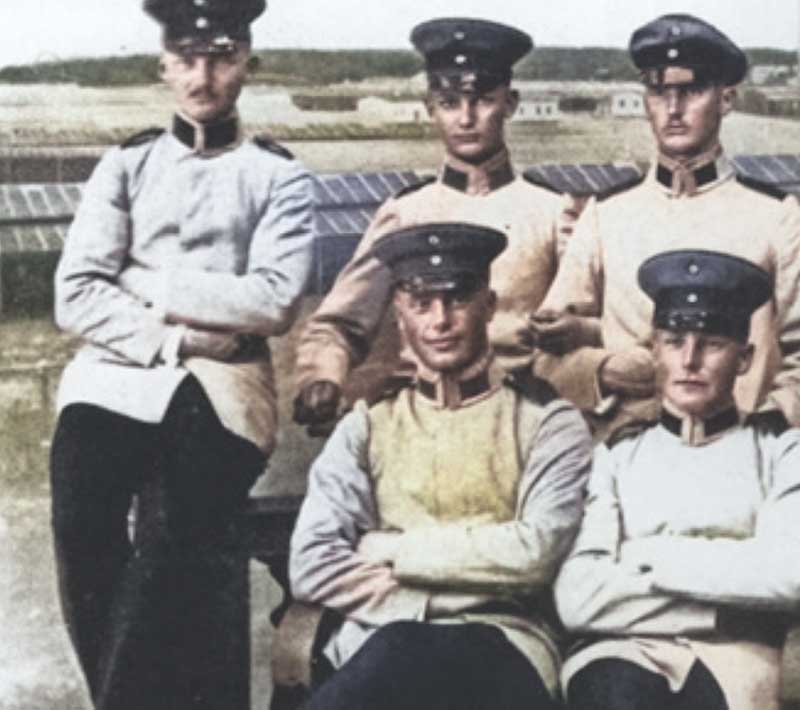
At this pivotal moment in the war, as German military strength began to falter, Walther Model assumed command of the most crucial fronts and repeatedly secured essential time for the Third Reich to recuperate. Walther Model solidified his reputation as a formidable defensive fighter, rising from division commander to army commander in less than two years. In March 1944, Hitler appointed him the youngest Generalfeldmarschall in the Wehrmacht. Like many German commanders in Russia, Model recognized that the elastic defense doctrine was largely ineffective on such an expansive front; however, he successfully devised a form of zone defense that aligned with his available resources. Despite some staff officers' disdain for his abrupt manner, the average German Landser found reassurance in Walther Model's arrival to command their sector, as he consistently restored a degree of order and stability amidst chaos and retreat.
In contrast to most German senior commanders, Model maintained a favorable relationship with the Führer and did not participate in the anti-Hitler conspiracy. In exchange, Hitler explicitly regarded Model as his premier field commander and lauded him as his “fireman,” capable of being relocated from one faltering front to another to salvage seemingly dire circumstances. Although Model's endeavors could not alter the Third Reich's overall declining military condition, he exhibited a talent for battlefield improvisation that consistently perplexed Germany's adversaries. Model was distinctive in delivering significant defeats to Marshal Georgy Zhukov in the Rzhev salient in November 1942, Field Marshal Bernard Montgomery at Arnhem in September 1944, and Lieutenant-General Omar Bradley in the Hürtgen Forest and the Ardennes from November to December 1944.
While Model is less renowned than the commanders who gained prominence during the fervent Blitzkrieg era of 1939-41, he, along with a select group of defensive specialists such as Erhard Raus and Hans-Valentin Hube, managed to impede, if not halt, the relentless advance of the Allied and Soviet forces toward Berlin.
The Early Years of Walther Model, 1891-1913
Otto Moritz Walther Model was born in January 1891 in the tranquil agricultural town of Genthin, situated 80 km (50 miles) west of Berlin. His father, Otto Paul Moritz Model, an instructor of music at the local girls' school, and his mother, Marie Pauline Wilhelmine, née Demmer, hailed from a bourgeois lineage. Otto, the elder brother, was born in 1884 and passed away in 1964, making him seven years senior to Walther. At the age of five, Walther's family relocated to a one-room accommodation. In contrast to the majority of German Generalfeldmarschalle, Model originated from a non-military family devoid of connections to the landed gentry, and he spent his formative years in austere circumstances, characterized by a scarcity of running water in the household.
The German evangelical church educated Walther, who first attended the local school in Genthin. In 1900, Model's father assumed the role of music director in Erfurt, where Walther subsequently attended the gymnasium (German secondary school) for the following six years. Following years of relocation and residing in transient accommodations, Model family ultimately established their residence in Naumburg. During his time in school, Walther exhibited no interest in athletics; however, he became a member of a literary society and demonstrated proficiency in Latin, Greek, history, and poetry. Unlike Genthin or Erfurt, Naumburg had a distinct military atmosphere due to the presence of a regiment of infantry and artillery stationed in the town.
Many of Walther's classmates were the children of military officers, and they invited him to participate in the local infantry regiment's exercises. Hans-Valentin Hube, the son of an Army Colonel, was a friend of Walther. In February 1909, Walther was among 19 students at his gymnasium who successfully passed the examination committee and obtained their Abitur. Among these graduates, Walther, Hans Hube, and five others chose to enlist in the Army.
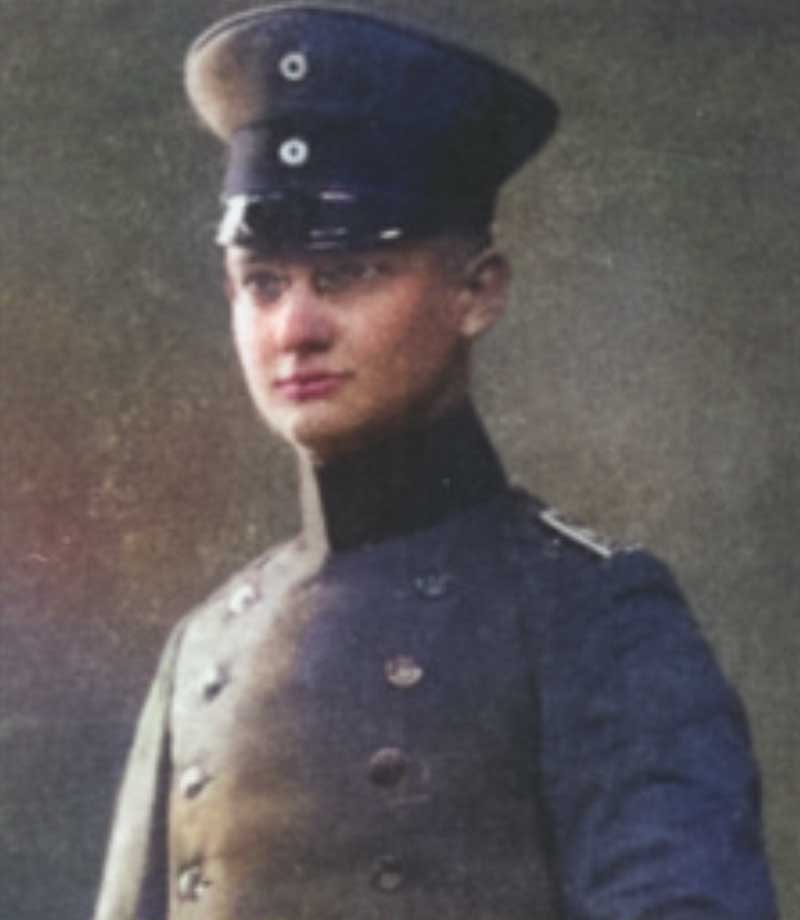
Walther's choice to enlist in the Army surprised his nonmilitary family, who anticipated he would pursue law school like his elder brother Otto. Entering the officer admission process of the Kaiser's Army proved challenging for individuals from non-military backgrounds; thus, Walther sought assistance from his uncle, Martin Model, a reserve officer in Infanterie-Regiment von Alvensleben Nr. 52. Through his connections, Martin secured an interview for young Walther with his regimental commander, Colonel Henseling. Three days after obtaining his Abitur (German high school diploma), Walther traveled by train to Cottbus with his father. Before Colonel Henseling, Walther Model—short, unathletic, and myopic—did not embody the archetype of a Prussian officer; however, Henseling was impressed by the young man's demeanor and chose to accept him as an officer cadet (German: Fahnenjunker) in the regiment.
In accordance with standard procedure in the German Army, Walther dedicated the subsequent eight months to mastering fundamental drill and non-commissioned officer duties in III Battalion. In November 1909, the German Army elevated him to the rank of Fähnrich (ensign) and assigned him to the Kriegsschule (military school) in Neisse after he demonstrated adequate proficiency. Model successfully completed the course and returned to his regiment as a newly appointed lieutenant in August 1910. He dedicated the subsequent three years to serving as a company-level officer, acquiring expertise in his role as an infantryman.His superiors acknowledged Model's exceptional enthusiasm, efficiency, and passion in task completion throughout this period.
Despite being a relatively junior officer, lieutenant Model secured the vacant battalion adjutant position in October 1913. This position enabled Model to demonstrate his abilities and receive acknowledgment from his superiors. In his role as battalion adjutant, Model started to represent the characteristics of a conventional Prussian officer, marked by a severe behavior and an obvious monocle, while maintaining the intensity and language of a German small-town bourgeois.
The Military Life of Walther Model, 1914-43
World War I, 1914-18
At the onset of World War I in August 1914, Lieutenant Model's regiment significantly contributed to the invasion of Belgium. On 23 August 1914, Model experienced his first combat when his regiment launched a frontal assault against the British Expeditionary Force at Mons, resulting in significant casualties. Subsequently, following the unsuccessful march on Paris due to the Allied counteroffensive at the Marne in early September, Model's regiment returned to trench warfare in the vicinity of Soissons.
Despite Model's initial year in combat passing largely unnoticed, his first chance for acclaim arose in the autumn of 1915. The French were resolute in expelling the German forces from their territory and commenced the accumulation of over 2,000 artillery pieces for a significant offensive in Champagne. Model's regiment was directly in the trajectory of this assault. On 21 September 1915, First Lieutenant Model was at his battalion command post on the reverse slope of the Butte de Tahure, situated 41 km (25 miles) east of Reims, when the French initiated an extensive 75-hour artillery bombardment. After three days of unrelenting bombardment, the French Army's most formidable unit, the He Corps d'Armee Colonial, assaulted the German trenches on the Butte, only to face significant casualties in return.
Following the attack, Model composed a report to the brigade commander, Colonel Prince Oskar von Preussen, stating, “Infantry ammunition was depleted.” The French are repelled. We currently have 60 percent of our regiment incapacitated. Kindly provide prompt assistance. The prince, a son of the Kaiser (German emperor), was impressed by Model's composure under pressure and subsequently sent reinforcements. He also noted the recommendation of Model for General Staff training. First Lieutenant Model received the Iron Cross 1st Class for his combat performance at the Butte de Tahure on 19 October. Nevertheless, following the conclusion of the French offensive, Model sustained severe injuries from artillery shrapnel to his right shoulder on 3 November 1915. He spent six weeks in the hospital recovering.
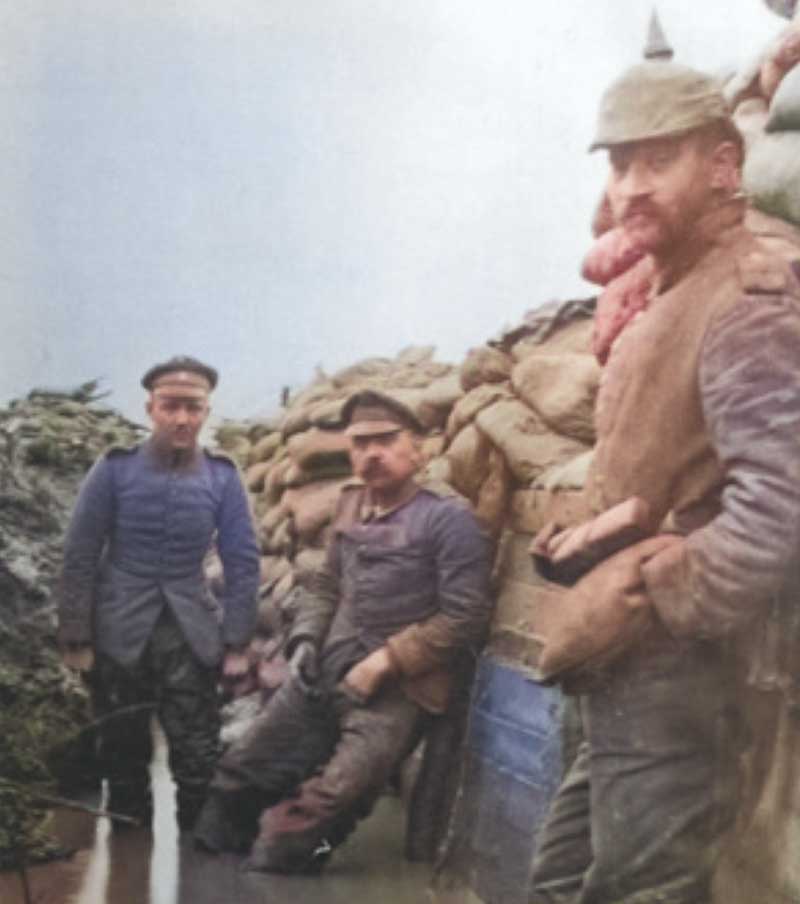
Model resumed his adjutant responsibilities prior to Christmas in 1915, and his unit was chosen to engage in the forthcoming Verdun offensive. On 25 April 1916, Model sustained severe injuries to his right thigh from shell fragments. Upon his return to the front, Prince Oskar appointed him as his brigade adjutant. Model consistently exhibited exceptional proficiency as a staff officer, leading to his selection by Colonel Hans von Seeckt in June 1917 to join the Oberste Heeresleitung (OHL), the supreme command of the Army. Lieutenant Model served as an ordnance officer in the OHL at Bad Kreuznach until February 1918, when Seeckt and Prince Oskar endorsed Model for General Staff training. He subsequently traveled to Sedan for a month-long condensed course.
This marked a significant juncture in Model's career, indicating his recognition as an individual with elevated command potential. After completing the course, the Garde-Ersatz-Division assigned Model as a supply officer during the 1918 Spring Offensive. Following the failure of the German offensives to secure victory, he received another appointment as the supply officer of the 36th Reserve Division, where he remained stationed in Flanders throughout the war. Model acquired significant combat and administrative experience during World War I and endured three combat injuries.
Service in the Reichswehr, 1919-35
Notwithstanding his acceptance into the esteemed Groβer Generalstab (Great General Staff), Model hid his resentment regarding Germany's defeat, and the outlook for a post-war military career seemed bleak. For the subsequent year, Model was uncertain about his future in the Army; however, in November 1919, he learned that he was among the 4,000 Army officers chosen by Colonel General Hans von Seeckt to continue in the reduced Reichswehr, as stipulated by the Treaty of Versailles.
The 14th (Badisches) Infantry Regiment, located in Konstanz near the Swiss border, named Model as its company commander. The Reichswehr dispatched his unit to the Ruhr in March 1920 to quell an armed communist insurrection in the town of Eberfeld, resulting in the deaths of over 1,000 strikers. During his stay in civilian accommodations in the Ruhr, he encountered Herta Huyssen (1892-1985). One year later, on May 11, 1921, they tied the knot in Frankfurt. At this point, Wehrkreis VI reassigned Model, who commanded an infantry company in Görlitz for a year before serving as a Groβer Generalstab officer in Münster for four years. In September 1923, Model's daughter Hella was born.
During his time in Münster, Model served under General der Infanterie “Fritz” von Loβberg, the commander of Wehrkreis VI and an adept defensive strategist from World War I. Loβberg emerged as one of Model's most significant professional mentors, and the young Hauptmann was captivated by Loβberg's notion of “defense in depth.” During World War I, Loβberg exhibited a distinct aptitude for rehabilitating German front lines that were on the verge of collapse due to Allied offensives by effectively utilizing reserves and executing counterattacks. Loβberg, in contrast to other German officers, rejected the doctrine of elastic defense, advocating instead for a rigid, continuous front as crucial for an effective defense against a formidable enemy offensive.
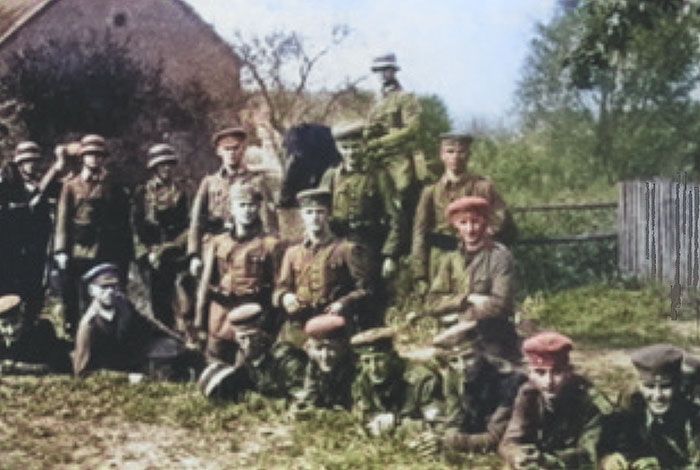
Following extensive instruction from Loβberg, Model was reassigned to Wehrkreis III (Berlin) in 1925 to lead another infantry company for three years, subsequently serving on the staff of the 3rd Division for one year. His son Hans-George was born in 1927, and his daughter Christa was born in 1929.
In October 1929, Model was elevated to the rank of major and appointed to the Truppenamt T4 (training) section in Berlin, where he effectively utilized his Groβer Generalstab training. Model dedicated the subsequent four years to overseeing junior-level leadership training. Colonel Walther von Brauchitsch, who would later ascend to the position of commander-in-chief of the Army, was Model's superior; his affiliation with Brauchitsch represented an unexpected opportunity in his career. In August 1931, Model accompanied Brauchitsch on a six-week inspection of covert training sites established in the Soviet Union to circumvent the restrictions of the Treaty of Versailles. Model's diligent reputation yielded results, culminating in his promotion to the rank of Lieutenant Colonel in November 1932.
After serving as a staff member in Berlin for four years, Model received a new assignment to lead an infantry battalion in East Prussia from 1933 to 1934. This era marked significant transformation for Germany, as Adolf Hitler ascended to the position of chancellor in 1933 and subsequently became commander-in-chief of the military in 1934. Hitler advocated for the abolition of the Treaty of Versailles in March 1935, which led to the replacement of the Reichswehr with the new Wehrmacht. In October 1934, Hitler promoted Model to the rank of Colonel and gave him command of a regiment for a one-year period.
Wehrmacht Service, 1935-39
Hitler also instituted the reestablishment of the Groβer Generalstab and the formation of the Oberkommando des Heeres (OKH). The General Staff of the Army appointed Model as the chief of the 8th Department (Technical) in October 1935. His duties included inspecting, testing, and assessing new weaponry, particularly artillery. Model dedicated the subsequent three years to this assignment and attained the rank of major general in February 1938. He emerged as a keen protagonist of Army motorization and initiated his affiliation with the emerging Panzer (tank) community while employed in the General Staff, aligning himself with General Lieutenant Heinz Guderian on matters of equipment and organization.
In contrast to many of his contemporaries, Model was unfazed by the Blomberg-Fritsch incident in January 1938, during which the Nazi party systematically eliminated political adversaries from the Groβer Generalstab. The elevation of Walther von Brauchitsch, Model's former mentor from the Truppenamt, to the position of commander-in-chief of the Wehrmacht significantly enhanced Model's career prospects. Instead of resisting the ruling Nazi regime, Model wisely acknowledged the necessity of submitting to their fractured symbol and commenced cultivating influential relationships within the Nazi hierarchy, including figures such as Hermann Göring and Joseph Goebbels.
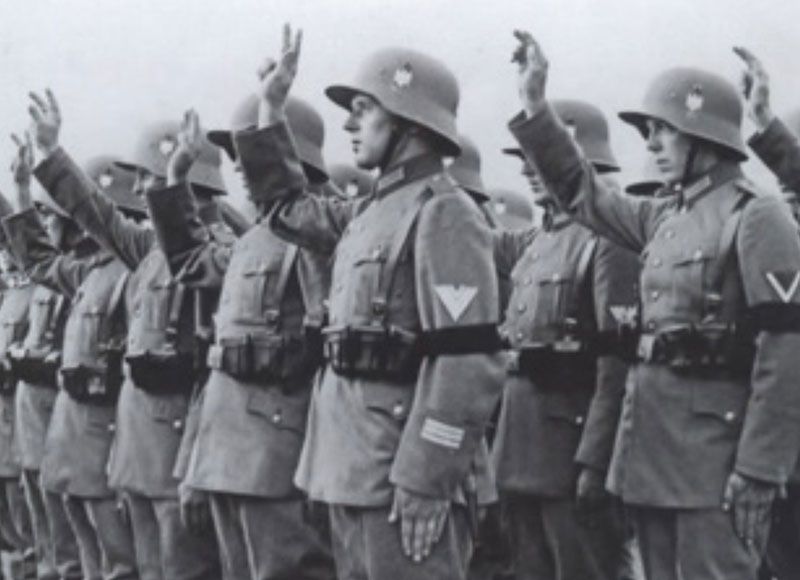
Model was not a political ideologue; instead, he was an enthusiastic German nationalist who regarded the Nazi party's initiatives to reconstruct the military and eliminate the constraints of the Treaty of Versailles as essential for the restoration of Germany's national dignity. Originating from a middle-class background, Model was particularly attractive to the new Nazi leadership, and his detachment from the traditional Prussian Junker class Junker, (Junker: “country squire”), was beneficial.
World War II - Poland and France, 1939-40
In November 1938, Major General Model was appointed as Chief of Staff of IV Armeekorps in Dresden. Upon the commencement of the invasion of Poland on 1 September 1939, Model's corps constituted a segment of the southern pincer targeting Warsaw and participated in the battle for the Czestochowa Kessel. Model primarily engaged in mopping-up operations instead of blitzkrieg tactics during the two weeks of active campaigning in Poland.
After the Polish campaign, General der Infanterie Ernst Busch appointed Model as Chef des Generalstabes of the 16th Army (AOK 16). Model spent most of the winter 1939-40 preparing for the deferred campaign against France in the spring. Model received an elevation to the rank of Lieutenant General in April 1940. Following the beginning of the invasion of France on 10 May 1940, Busch's AOK 16 progressed through the Ardennes Forest and, after the essential breakthrough at Sedan, assisted in securing the left flank of Panzergruppe Kleist and immobilizing the French 2e Armee within the Maginot Line. During the 39-day campaign, Model's responsibilities were significantly greater than in Poland; however, his operational-level warfare experience remained fundamentally positional.
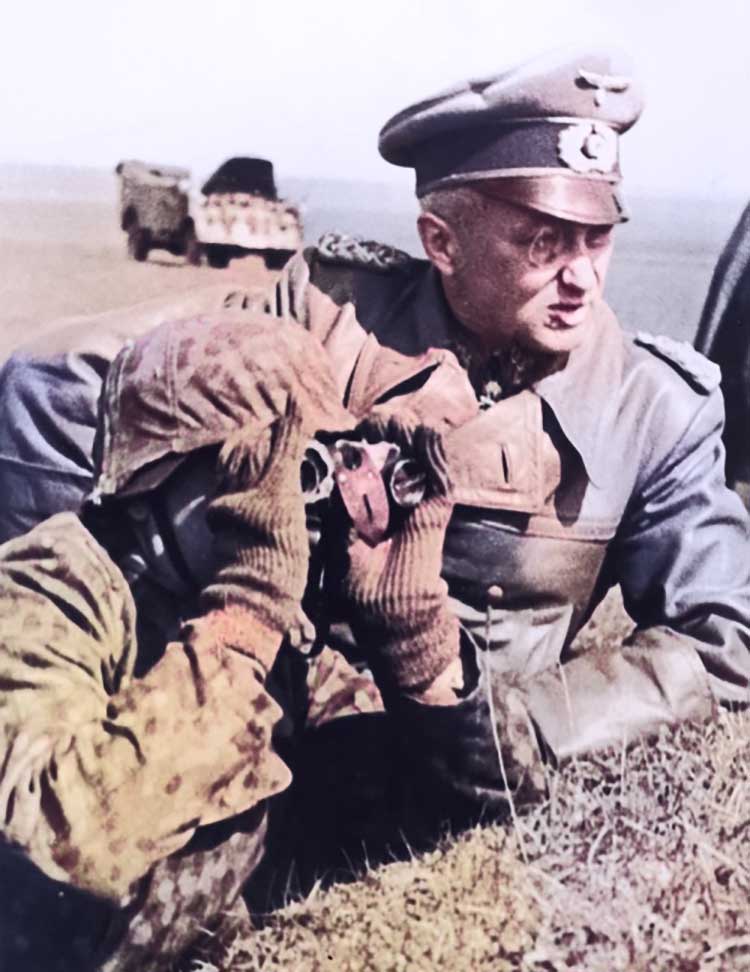
Following the occupation of France, AOK 16 transitioned to preparations for Operation Seelöwe (sea lion), the planned invasion of Great Britain, with Busch's army assigned to landings near Dover. Model took part in training for Seelöwe until the suspension of the operation in September. He was eager to secure a field command, and his associations with Brauchitsch ultimately proved beneficial; on 1 October 1940, he received information that he would assume command of the 3rd Panzer Division.
World War II - Commander of the 3. Panzer-Division
On 18 October 1940, Model arrived in Buckow, located in the southeastern suburbs of Berlin, to assume command of the 3rd Panzer Division. The division was undergoing refitting and reorganization in Wehrkreis III during the winter of 1940. Soon after, Model received notification that his division would participate in Operation Barbarossa, the upcoming invasion of the Soviet Union. Model immediately started a demanding training regimen for the division.
The 3. Panzer-Division was among 17 Panzer divisions designated to engage in Operation Barbarossa, and Model was one of only five commanders lacking prior experience in Panzer units, which generated some resentment. Although lacking a Panzer background, at 50 years old, Model was among his contemporaries; his former classmate, Hans-Valentin Hube, simultaneously assumed command of the 16. Panzer-Division. Model's division was allocated to XXIV Armeekorps (mot.) under Colonel General Heinz Guderian's Panzergruppe 2 for Barbarossa. Fully equipped with 215 tanks, the 3rd Panzer Division was a seasoned unit. This was the only time in Model's wartime military career that he led a fully operational unit of veterans. Moreover, in contrast to his auxiliary position in the Polish and French campaigns, Model would occupy a pivotal command role at the forefront of Heeresgruppe Mitte (Army Group Center) this time.
Upon the beginning of the invasion on 22 June 1941, Model's initial objective was to capture a crossing over the Bug River, situated south of the Soviet stronghold of Brest-Litovsk. Model formed a specialized assault unit with infantry and pioneers to seize the Koden Bridge, successfully securing it 20 minutes before the official start of hostilities. After securing the bridgehead, Model swiftly advanced in a Sd. Kfz. 232 (8-Rad) heavy armored vehicle and joined his spearhead.
Model's division quickly encountered the Soviet 22nd Tank Division, which was still in garrison, and successively overran it. Model's Panzers obliterated 190 T-26 light tanks within the initial 24 hours. The 3rd Panzer Division, expanding from the Koden bridgehead, maneuvered along the northern perimeter of the Pripet marshes and progressed eastward toward the town of Slutsk, directly en route to Smolensk. Model encountered greater opposition from the terrain—comprising swamps, roadless morasses, and several river crossings—during the initial phases of the invasion than from the Red Army.
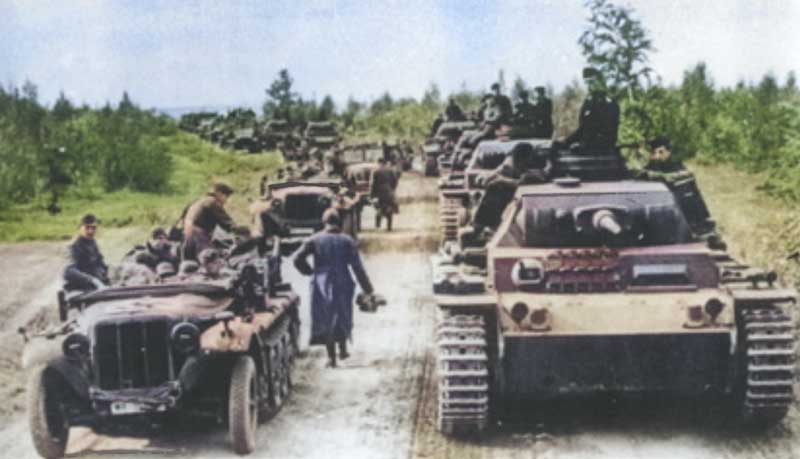
Model led from the front, often using his 8-Rad (eight-wheeled armored car), and was supported by a diverse Kampfgruppe (fighting group) that included Panzers, motorcycle infantry, and motorized pioneers. His staff followed closely, attempting to manage a division that was rapidly extending into a lengthy column and continuously lacking fuel.
Upon traversing over 250 kilometers (155 miles), Model arrived at the Shchara River late on 24 June. His primary adversary, General-Major Stepan I. Oborin, commander of the 14th Mechanized Corps, destroyed the bridge over the river while Soviet artillery targeted the immobilized German column as the German engineers constructed a new bridge. Model stood outside his vehicle, observing the engineer's efforts, when artillery fire destroyed his nearby command vehicle. Perplexed, Model instructed his engineers to finish the bridge overnight, and by the following morning, his Panzers had crossed. Model followed the assault troops closely in a Pz III Befehlspanzer (command tank); Soviet fire also incapacitated this vehicle, but Model escaped unharmed.
The spreading of Oborin's corps resulted in his shameful recall to Moscow and subsequent execution. On 26 June, Model reached Slutsk with the spearhead, having progressed 310 km (192 miles) in four days. Without pausing, Model advanced to the Berezina River two days later. Shortly thereafter, Model received the Knight's Cross for his achievements during the initial fortnight of Operation Barbarossa.
Now, the Soviet Western Front was winding from the devastating encirclement of the majority of its forces at Minsk and had limited resources available to halt Guderian's advancing Panzers. On the evening of 3 July, Model's division arrived at the Dnepr River in Rogachev; however, fuel shortages impeded any further progress. Following the vigorous progress of late June, the 3rd Panzer Division dedicated the majority of July and August to advancing toward Roslavl and subsequently Gomel. On 18 August, Model encountered superior Soviet armored units for the first time, as a contingent of T-34 tanks launched a counterattack at Unecha; however, his more competent Panzer crews triumphed. As the conflicts near Smolensk were concluding, Hitler redirected Panzergruppe Guderian southward to aid Heeresgruppe Süd in encircling the Soviet forces in Kiev.
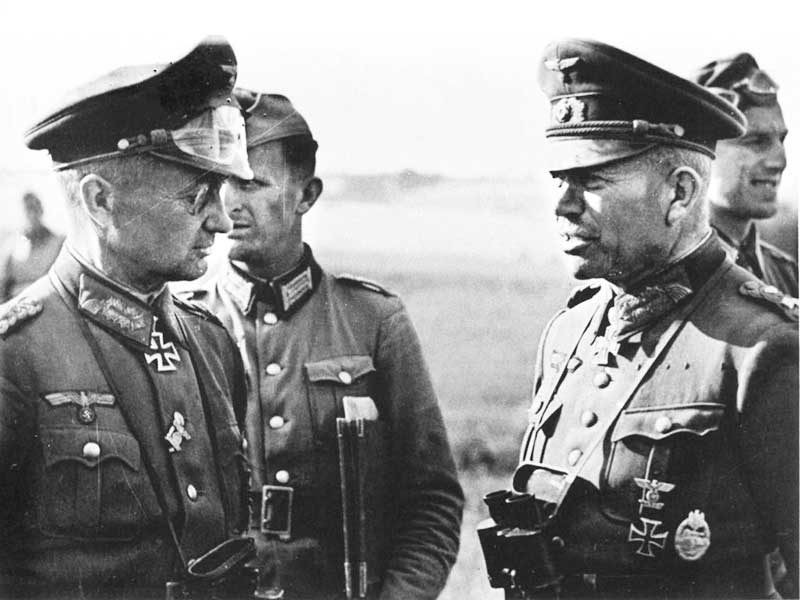
Model's division progressed southward on the morning of 23 August, surprising the Red Army and allowing his lead Kampfgruppe to capture the bridge over the Desna River intact. Nevertheless, the Soviet 21st Army obstructed further advancement southward, compelling Model to spend three weeks forcing his way forward amidst escalating resistance. However, Model's fortune persisted, and his forces seized bridges over the Sejm and Sula rivers, allowing his spearhead to connect with Hube's 16th Panzer Division south of Lokhvitza on 15 September, thereby finalizing the encirclement of 55 Soviet divisions in the Kiev pocket. Consequently, following a 350 km (220 miles) advance, Model's division was instrumental in the most significant German encirclement battle during Operation Barbarossa.
World War II - Drive on Moscow 1941
Model was presented with no rest for his fatigued division, which had fewer than 50 operational tanks remaining. Hitler decided to resume the advance on Moscow with Operation Typhoon and instructed Guderian to reroute his Panzergruppe to form the southern flank of Heeresgruppe Mitte's upcoming offensive, set to begin in two weeks. The Führer's directive mandated Guderian's Panzers to advance over 200 kilometers (124 miles) northward to the vicinity of Kursk. On 30 September, the offensive commenced as Panzergruppe Guderian swiftly overwhelmed Group Ermakov, while Model's division rapidly annihilated the Soviet 121st Tank Brigade. Guderian's Panzers executed a remarkable advance to capture Orel on 3 October, although at the expense of depleting their remaining fuel reserves.
For nearly a week, Model's division remained isolated outside Orel, facing no obstacles on their path to the southern approaches of Moscow. Colonel General George-Hans Reinhardt informed Model of his promotion to General der Panzertruppe and assigned him to command XXXXI Armeekorps (mot.) within Colonel General George-Hans Reinhardt's Panzergruppe 3 for the second phase of Operation Typhoon, while the 3. Panzer-Division awaited fuel near Orel. Model assumed command of the corps on 29 October, immediately prior to the resumption of the offensive.
During the second phase of Operation Typhoon, Model faced the challenging task of protecting Reinhardt's extended flank and maintaining communication with 9. Armee (AOK 9) as the rest of Panzergruppe 3 advanced eastward towards Klin. Soviet counteroffensives incessantly assaulted AOK 9 and Model's corps. Upon the cessation of the German advance 40 kilometers (25 miles) from Moscow, Reinhardt appointed Model to lead the final offensive and assigned him the 6th Panzer Division as well. Model maintained optimism regarding a breakthrough; however, the concluding German assaults failed to penetrate the defenses established by Konstantin Rokossovsky's 16th Army. As Typhoon reached its peak due to supply shortages, fatigue, and heightened Soviet resistance, Reinhardt's Panzergruppe 3 became vulnerable in a salient, with only screening units safeguarding its northern flank.
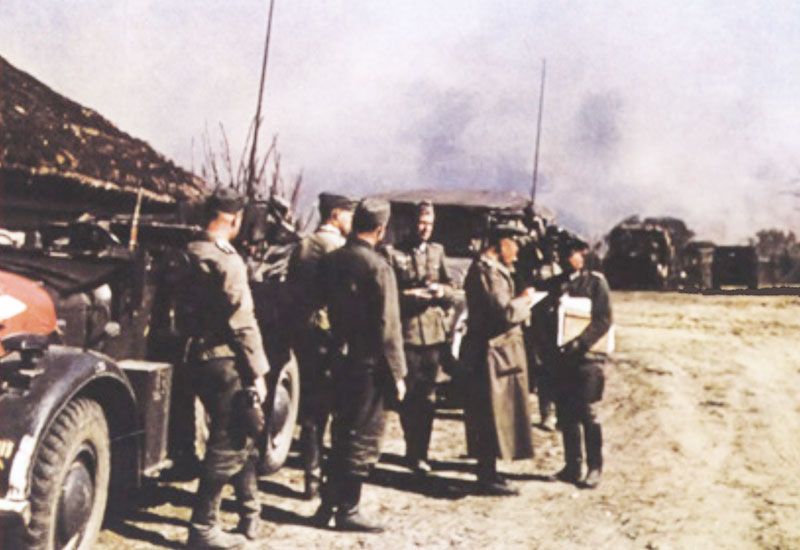
The Soviet winter counter-offensive commenced on 5 December, with the Kalinin Front's 29th and 31st Armies assaulting AOK 9 at Kalinin, while the Western Front engaged Panzergruppe 3 with the 1st Shock, 20th, and 30th Armies. As his flanks collapsed, Reinhardt was compelled to execute a fighting retreat to Klin while Model obstructed the pursuit from the Western Front. Nonetheless, the Soviets temporarily succeeded in encircling five of Reinhardt's motorized divisions, including Model's forces, in Klin by 14 December. The divisions managed to evade capture solely due to Soviet inexperience and urgent German counterattacks, yet they were compelled to abandon a sizable portion of their artillery and vehicles.
Model was arguably the sole German officer to bolster his reputation during the retreat from Moscow; while other senior officers encouraged for additional retreats, he actively opposed orders to withdraw due to the incapacity of others to maintain their sectors. He frequently ventured into the snow with his men, often with his pistol drawn to maintain declining discipline, traversing from one critical point to another. This led to staff officers in the rear giving upon him the nickname “Frontschwein” (front-line pig). Model served as a bastion of resilience during the retreat, exhibiting a proficiency in executing steadfast rearguard actions that averted the German withdrawal from devolving into a rout. His corps incurred significant casualties from both the adversary and frostbite during the withdrawal from Moscow.
After a period of intense combat during Christmas, the Rzhev-Kalinin sector experienced a temporary respite in early January 1942, which allowed both AOK 9 and Panzergruppe 3 to re-establish a fragile line around Rzhev. Colonel General Adolf Strauβ, commander of AOK 9, sought to retreat further due to his anticipation of an imminent Soviet offensive; however, Hitler prohibited this action. Colonel General Ivan Konev concentrated 35 divisions across five armies in the Kalinin Front and renewed the offensive against AOK 9 on 8 January 1942. The Stavka aimed to fracture the front of AOK 9 and Panzergruppe 3, subsequently encircling Heeresgruppe Mitte from the north, while additional Soviet forces encircled it from the south, with the objective of joining near Vyazma.
Konev struck AOK 9, which struggled to maintain control of Rzhev, but the Soviet 39th Army secured a significant breakthrough on 10 January, creating a substantial breach in the sector occupied by SS-Standartenführer Hermann Fegelein's SS-Kavalleriebrigade. The following day, the Soviets advanced a mobile contingent comprising three cavalry divisions and a motorized division deep into AOK 9's rear, encircling three divisions of the VI Armeekorps at Olenino and reaching Strauβ's headquarters in Sychevka. Staff officers and rear-area support personnel had to repel Soviet tanks and infantry to prevent the capture of Sychevka and its vital supply railyard. Strauβ experienced a physical breakdown, resulting in AOK 9 being devoid of leadership.
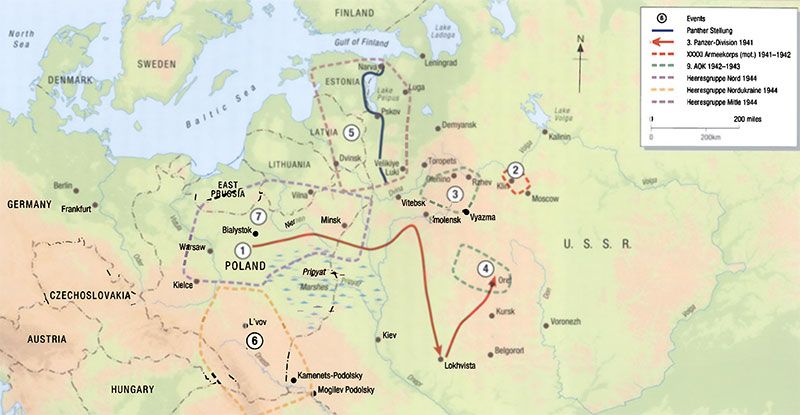
- From 22 June to 26 October 1941, Model commanded the 3rd Panzer Division during the initial phases of Operation Barbarossa.
- From 1 November 1941 to 15 January 1942: Model assumes command of XXXXI Armeekorps (mot.) for the ultimate offensive towards Moscow, which fails to achieve its goal.
- From 16 January 1942 to 30 March 1943: Model commands the 9th Army (9 AOK) and effectively defends the Rzhev salient for more than a year against intense Soviet assaults.
- From 1 April to 1 November 1943: Model's 9th Army Corps transitions to the Orel Salient, where he leads the northern pincer during the Zitadelle offensive in July 1943, subsequently executing a tactical withdrawal from Orel to the Hagen Stellung.
- From 31 January to 30 March 1944, Model assumed command of Heeresgruppe Nord following the Soviet breakout from Leningrad, executing a strategic delaying retreat to the Panther Stellung.
- From 31 March to 28 June 1944, Model assumed command of Heeresgruppe Nordukraine following Hitler's dismissal of Manstein for his inability to halt the Soviet advance into Ukraine.
- From 28 June to 15 August 1944, while maintaining command of Heeresgruppe Nordukraine, Model assumes command of Heeresgruppe Mitte and successfully reconstructs a new front line in Poland following the devastating impact of the Soviet Operation Bagration on the Wehrmacht.
The Soviet Northwest Front accomplished a significant breakthrough at the juncture of Heeresgruppe Nord and Heeresgruppe Mitte, encircling 90,000 soldiers of AOK 16 at Demyansk. The 4th Shock Army surged through the expansive 260 km (161 mile) wide breach in the front and advanced swiftly towards Smolensk and Vitebsk to disrupt Heeresgruppe Mitte's primary supply routes. Considering the impending disaster, Colonel General Franz Haider, the head of the OKH, designated the Rzhev-Sychevka sector as the “most critical location on the Eastern Front.”
After serving as corps commander for two months, Model received an abrupt order on January 16 to fly to the Führer's headquarters at Wolfsschanze in East Prussia. There, he received news of his promotion to Colonel General and his appointment as the commander of AOK 9, taking over from Strauß. They tasked him with stopping the Soviet incursion and reestablishing the front line. Model's plain demeanor significantly impacted Hitler, who subsequently remarked, “Did you observe that eye?” I have confidence in his abilities, yet I would prefer not to be subordinate to him. Despite Model's promotion over several senior officers, few, if any, would have desired to lead a fragmented and partially encircled army. Model approached this formidable task with his characteristic optimism and vigor.
The Hour of Destiny for Walther Model
World War II - Saving the Northern Flank 1941-1942
Upon Model's arrival at the AOK 9 headquarters in Sychevka, south of Rzhev, he discovered that his new command was in total disarray. Although he officially commanded a dozen divisions, after weeks of combat and withdrawal, most units maintained less than 25 percent of their infantry. The forces were fatigued, resources were scarce, and morale was deteriorating. Moreover, the VI Armeekorps encircled three of the six divisions near Olenino, while the remaining corps remotely held their positions at Rzhev and along the Volga line. Konev had advanced the majority of his 29th and 39th Armies, along with the 11th Cavalry Corps, through a 14 km (9 mile) wide breach between the Olenino Pocket and Rzhev.
By the time Model arrived, certain Soviet units were nearing the primary German line of communication along the Minsk-Moscow highway. Within his new headquarters, Model examined the situation map and subsequently addressed his demoralized staff, announcing that AOK 9 would initiate a multi-division counter-offensive within 72 hours to extract the besieged forces at Olenino, consequently encircling the two advancing Soviet armies. Despite his staff's objections regarding the infeasibility of launching an assault with inadequate troop strength amidst severe Arctic weather, characterized by nighttime temperatures of -40° C (-40° Fahrenheit) and a meter (10 feet) of snow, Model remained resolute that AOK 9 would proceed with the attack.
Heeresgruppe Mitte redeployed units from 3. Panzerarmee (PzAOK 3) and 4. Armee (AOK 4) to safeguard its supply lines, while Model collaborated with the OKH to orchestrate an exceptional airlift of a portion of Infanterie-Regiment 337 from France to secure Sychevka. The primary reinforcement was Colonel General Heinrich von Viettinghoff-Scheel's XLVI Armeekorps (mot.) alongside the SS-Division Reich and the 5. Panzer-Division. Although Model welcomed the reinforcements, he was astonished to discover that the OKH intended to dictate their utilization. As his generals' insubordination escalated during the retreat from Moscow, Hitler began micro-managing crucial tactical operations. He instructed Model to deploy XLVI Armeekorps (mot.) for a localized counterattack at Gzhatsk, rather than relieving the Olenino Pocket.
Upon receiving this information, Model returned to Wolfsschanze and requested an immediate audience with Hitler. When challenged, Hitler insisted that Model adhere to orders, yet Model maintained his position and boldly inquired, “Who commands the 9th Army, mein Führer, you or I?” Hitler was astonished by the unprecedented defiance exhibited by one of his generals; however, he not only acknowledged Model's authority to deploy reinforcements as he saw fit, but he also developed respect for the general who refused to submit to him.
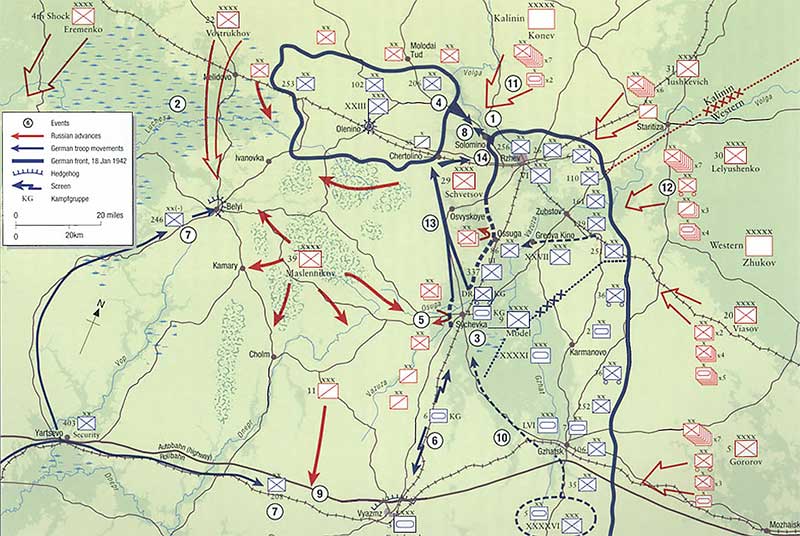
- On 11 January, the Soviet 39th Army achieves a breakthrough that encircles the German XXIII Armeekorps in Olenino while progressing southward toward Sychevka.
- From 12 to 17 January, the XXIII Armeekorps withdraws its troops into a defensive formation around Olenino, establishing a 130 km (80 mile) wide breach between AOK 9 and AOK 16 to the west. The Soviet 22nd Army and 4th Shock Army progress into this breach.
- On 18 January, Model assumes command of AOK 9 and reallocates several units from the eastern flank of the salient to establish a new front between Rzhev and Sychevka. Hitler permits Model to deploy the 1st Panzer Division and SS Reich Division from the 3rd Panzer Army Group to stabilize the situation in Sychevka.
- On January 22-23, Model executes a pincer maneuver utilizing VI and XXIII Armeekorps, thereby re-establishing a connection to the Olenino Pocket.
- On 22 January, the Soviet 39th Army initiates assaults on Sychevka and Ossuga; however, Model's ad hoc defenses withstand the attacks.
- Model instructs Raus to secure the rail line south of Sychevka on 25 January, sourcing his Kampfgruppe from the 6th Panzer Division and support units.
- German reinforcements arrived by rail from France on 25 January: they dispatched the 246th Infantry Division to secure a crucial road junction at Bely, and assigned an additional regiment from the 208th Infantry Division to protect the primary Smolensk-Vyazma rail line. The 403rd Security Division also assists in containing the advance of the 39th Army.
- On 26 January, Model dispatches Gruppe Recke, comprising Infanerie-Regiment 169 and Kampfgruppe Kumm from the SS Reich Division, to secure the critical Solomino sector.
- On 27 January, the Soviet 11th Cavalry Corps temporarily disrupts the Smolensk-Vyazma highway, thereby severing the primary supply route for three German armies, including Army Group 9.
- On 28 January, the 4th Panzer Army transfers the XXXXVI Corps along with the 5th Panzer Division to Model's Army Group 9 for his counter-offensive.
- From 1 to 15 February 1942, Konev persistently attempted to breach the defenses and restore communications with the 39th Army, yet Gruppe Recke's defense remained intact.
- From late January to mid-February, the remaining forces in Zhukov's Western Front persistently assault the eastern flank of the Rzhev salient, thereby heightening the potential for breakthroughs in alternative sectors.
- 1-5 February: Model launches his counter-offensive with XXXXVI Armeekorps, which slowly pushes northwest and splits the 29th Army from the 39th Army.
- 17 February: Reinforced with more armor and artillery, Model's final counterattack crushes the trapped 29th Army, taking 5,000 prisoners.
On the morning of 21 January, Model initiated his counteroffensive as planned, with VI Armeekorps executing pincer maneuvers from Olenino and Rzhev while returning to Sychevka. The assault was unimpressive by Wehrmacht standards, including merely elements of two infantry divisions, four assault guns, limited artillery, and a handful of Luftwaffe sorties; however, it happened under severe weather conditions and with fatigued troops. Following a week of intense combat, the counteroffensive succeeded in re-establishing the connection to the Olenino Pocket and isolating nine Soviet divisions comprising 60,000 troops in the forests and marshes southwest of Rzhev. To execute this counterattack, Model was forced to systematically deplete other areas surrounding Rzhev of his remaining infantry, substituting them with Sperrverband units (blocking units) and alarm battalions comprised of clerks, convalescents, signalmen, and artillerymen, thereby heightening the risk of further Soviet incursions.
Due to the largely undefended region south of Sychevka, the Soviet 18th Cavalry Division was able to access the Moscow-Minsk Highway on 27 January, severing the primary supply routes to AOK 9. With his responsibilities at Olenino overwhelming, Model enlisted Lieutenant General Erhard Raus, commanding a small Kampfgruppe from the 6. Panzer-Division, to rectify the situation south of Sychevka. Raus achieved remarkable success by employing an improvised armored train and Kampfgruppen comprised of mechanics and supply personnel to eliminate the Soviet cavalry from the rail lines, thereby solidifying his rapport with the new army commander. As a senior commander, Model sought to cultivate a group of reliable subordinates capable of executing challenging missions, with Raus being among the initial members of this group.
Konev was astonished by Model's capacity to orchestrate a rapid counterattack, yet he refused to passively observe as he decimated the isolated 39th Army. He ordered his 29th Army to launch an immediate assault to break through the narrow German corridor. Model foresaw this and repositioned some of his elite forces to this sector, including Kampfgruppe Kumm, which included the 650-man SS-Regiment Der Führer, four 88mm flak guns, and five StuG III assault guns. Model instructed SS-Obersturmbannführer Otto Kumm to "maintain position at all costs." The Soviet 29th Army relentlessly assaulted Kumm's Kampfgruppe for three weeks but was unable to penetrate their defenses, incurring substantial losses in the endeavor.
Model closely monitored Kumm's defense, visiting regularly—even on horseback when snow obstructed the road—and motivating the troops to persevere. Upon conclusion, Kumm retained merely 35 of his SS troops; however, he successfully fulfilled his mission, and Model personally awarded him the Knight's Cross for his tenacious defense. Hitler promptly recognized that Model had successfully transformed the dire circumstances of AOK 9, prompting him to summon Model to the Wolfsschanze on 17 February to bestow the Knight's Cross with Oak Leaves.
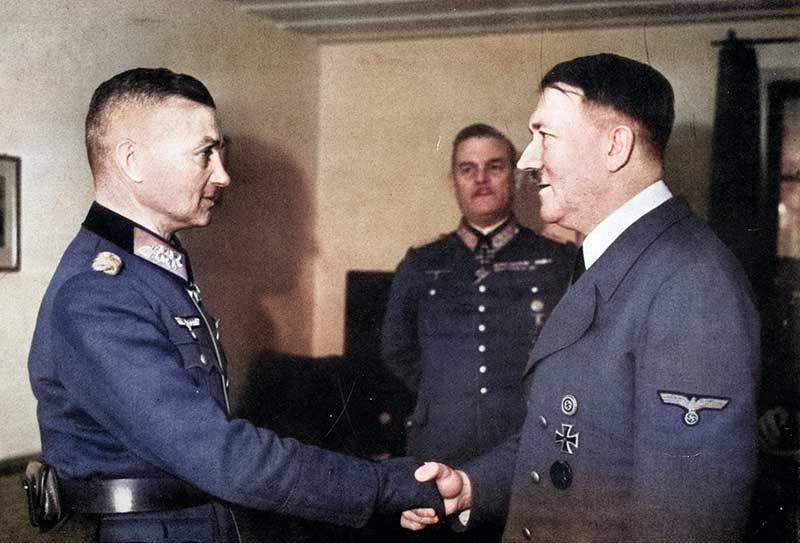
As Konev's offensive decreased in mid-February 1942, a stalemate ensued, allowing Model to eradicate the isolated Soviet 39th Army and reinstate AOK 9's combat efficacy. To replenish his diminished units, he extracted additional support personnel from the rear and reclassified them as infantrymen, assigning their responsibilities to Russian auxiliaries. He concentrated on the remaining tanks and artillery. Model appointed Raus to oversee the reduction of the 39th Army, referred to as the “Snail Offensive” due to AOK 9's limited resources, which permitted only small, planned assaults instead of sustained offensive maneuvers.
The encircled Soviet forces were in a precarious situation, possessing insufficient ammunition and a minimal number of heavy armaments. Raus progressively displaced the 39th Army from AOK 9's lines of communication, providing Model with additional maneuvering space. By mid-April 1942, when the Soviet Rzhev-Vyazma Offensive concluded, Konev's Kalinin Front had incurred 341,000 casualties, while AOK 9 had established a stable front line.
World War II - Model's Defensive Tactics 1942
From January to May 1942, Model initiated a series of tactical innovations and doctrinal modifications that markedly enhanced AOK 9's capacity to counter Soviet offensives. In contrast to Panzer generals Reinhardt and Hoepner, who appeared disoriented when unable to execute effective Bewegungskrieg due to deep snow, mud, and fuel shortages, Model demonstrated the ability to adapt and improvise with available resources. To acquire a force capable of maneuvering in snow and mud without reliance on fuel supplies, he removed all mounted reconnaissance units from his infantry divisions and consolidated them into a brigade-sized Kavallerie-Kommando.
Instructing his diminished Panzer units, he ordered the 5. Panzer-Division to establish a ski battalion. Model determined that, rather than relying on division and corps commanders to efficiently utilize their remaining artillery resources, he would centralize fire planning under HArko 307 (Higher Artillery Command 307), ensuring adequate fire support in critical areas. His principal necessity was to increase front-line infantry intensity, which he accomplished decisively by mandating a 5 percent reduction in headquarters and support personnel, who were subsequently reassigned to infantry units. Due to significant losses in vehicles and artillery during the withdrawal from Moscow, AOK 9 had a surplus of idle artillerymen and mechanics; consequently, Model utilized these personnel as infantry replacements. These measures were unpopular in AOK 9, yet they allowed Model to progressively reconstruct a continuous front line.
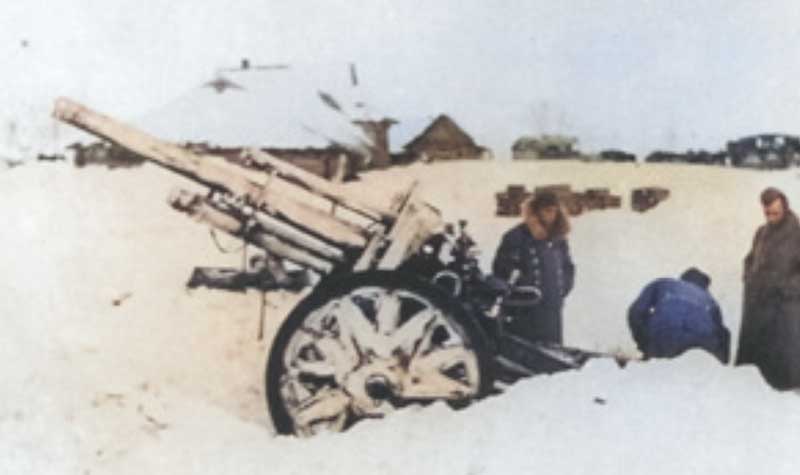
During the retreat from Moscow, beleaguered German units could not implement an elastic defense doctrine due to excessively broad fronts and inadequate troop numbers, leading them to establish an expedient strongpoint defense reliant on fortified villages and towns. Model opposed this strategy, as Soviet infantry could easily penetrate the spaces between strongpoints, rendering German positions in villages susceptible to artillery fire. Model opted to revert to certain strategies that had been effective on the Western Front from 1916 to 1918, despite numerous Wehrmacht officers emphasizing that these tactics were unsuitable for the Eastern Front. Initially, Model prioritized tactical intelligence acquisition via infantry patrols and learned to listen to his intelligence officer.
By enhancing situational awareness, Model could predict the timing and location of Soviet offensives and guarantee the reinforcement of vulnerable sectors. Secondly, he mandated that all his units establish a continuous front, even if it was weak and solely staffed by support personnel. Model established a continuous front in the Rzhev salient over six months, returning significant benefits during the subsequent two Soviet offensives. Model constructed his defense by eliminating gaps in the front, relying on forward observers linked by field telephones to HArko 307, which could concentrate artillery fire to disrupt Soviet infantry assaults before they breached his lines. Thirdly, aside Hitler's directives prohibiting the establishment of “Tall-back” positions, Model consistently safeguarded his interests by discreetly constructing fortified “switch” lines in his rear for troop occupation in the event of a Soviet incursion.
World War II - The Rzhev Meatgrinder 1942-1943
During the “Snail Offensive,” Model demonstrated his typical restless energy, rapidly moving between divisional command posts. On 23 May 1942, while returning from an inspection of the crucial Belyi sector, a Soviet machine gunner targeted Model's Fiesler Storch (German aircraft used for reconnaissance, liaison and aeromedical transport), which was hovering approximately 50 meters (164 feet) above the forest. Both Model and his pilot sustained injuries. A single round impacted Model's hip, traversed his chest, and subsequently exited through his shoulder. Model sustained severe injuries, and it was solely the skill of his injured pilot that enabled the landing of the compromised aircraft at a nearby German field hospital, ultimately preserving his life. After stabilizing Model's condition for several days, they discharged him to recover in Dresden. Colonel General Viettinghoff assumed temporary command of AOK 9 during Model's absence.
Model underwent an 11-week recovery from his injuries. During his absence, Viettinghoff executed Operation Seydlitz from 2 to 12 July, which ultimately sealed the Belyi gap and annihilated the encircled 39th Army. The cavalry brigade of Model excelled, navigating expertly through the marshy woodlands. The Stavka remained determined to obliterate the Rzhev salient and dispatched substantial reinforcements to Konev to reconstruct the Kalinin Front for an additional major offensive. Konev launched an assault with two armies to seize Rzhev on 30 July, while Zhukov arrived to assume direct command of the Western Front and initiated an attack with two additional armies on 4 August.
The four Soviet armies gradually advanced, displacing Viettinghoff's forces by 32 kilometers (20 miles) and creating a notable bulge in the northeastern section of the Rzhev salient. Zhukov did not attain a significant breakthrough. Upon returning to Dresden, Model demonstrated impatience to resume his command and flew to Sychevka on 7 August. Upon his return to the front, Zhukov's offensive was diminishing, having not succeeded in capturing Rzhev, and Model commenced the process of rehabilitating AOK 9's damaged front line.
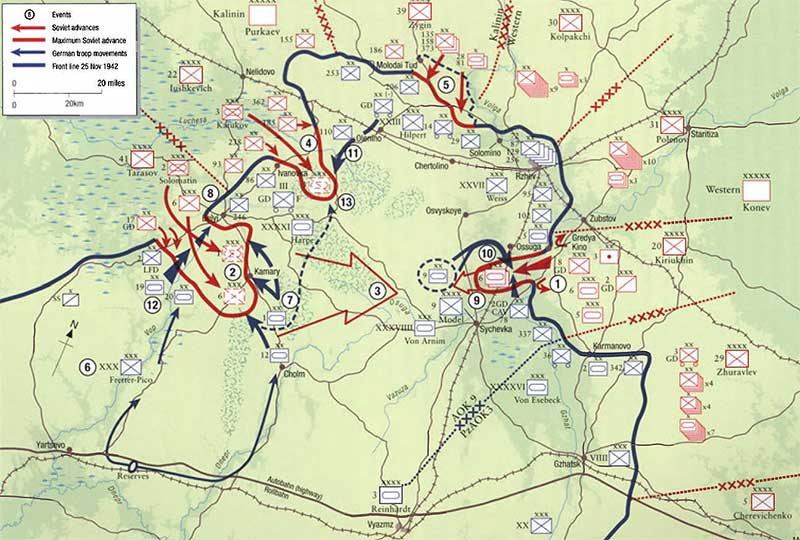
November 25-28, 1942
- The Soviet 20th Army initiates Operation Mars by launching an assault along the Vazuza River. Despite the failure of the supporting flank assaults, the 8th Guards Corps secures a minor breakthrough, prompting Konev to deploy the 2nd Guards Cavalry Corps and the 6th Tank Corps into the gap.
- The Soviet 41st Army secures a breakthrough in the Bely sector, occupied by a Luftwaffe division. Purkaev deploys the 1st Mechanized Corps into the breach, achieving an advance of 35 kilometers (22 miles).
- Zhukov intends for the mobile groups of the 20th and 41st Armies to converge west of Sychevka.
- The Soviet 22nd Army attains a notable breakthrough in the Luchesa River valley. A double envelopment confronts Harpe's 41st Panzer Corps.
- The Soviet 39th Army, as a supporting offensive, assaults the German XXIII Armeekorps and gradually retreats it several kilometers.
- Model requests the 12th, 19th, and 20th Panzer Divisions from Army Group Center's reserve, under the command of XXX Corps.
- The 1st Panzer Division impedes the 1st Mechanized Corps and averts Bely's encirclement.
- The Soviet 41st Army launches multiple assaults on the Germans in Bely but is unsuccessful in seizing the town.
- The offensive of the Soviet 20th Army is impeded following a 12 km (7 mile) incursion. All attempts to expand the gap are unsuccessful. The 5th Tank Corps' commitment does not penetrate Arnim's defenses.
November 29–30, 1942
- Arnim launched a counteroffensive utilizing the 5th and 9th Panzer Divisions, effectively encircling the 6th Tank Corps and the 2nd Guards Cavalry Corps. Both Soviet formations are progressively annihilated.
- Model directs the Grossdeutschland Division to hinder the Soviet 3rd Mechanized Corps.
December 1 to 9, 1942
- Fretter-Pico's XXX Armeekorps launched counterattacks against the flank of the 41st Army, swiftly isolating the 6th Rifle Corps and the 1st Mechanized Corps. Both Soviet corps have been annihilated.
December 10-20, 1942
- In mop-up operations, the 12th Panzer Division reclaims territory in the Luchesa Valley.
Zhukov was convinced that AOK 9 was nearly incapacitated and still harbored aspirations of annihilating the Rzhev salient through a pincer maneuver. Konev was reassigned to command the Western Front, while Colonel-General Maksim Purkaev assumed control of the Kalinin Front. Zhukov continued as the Stavka coordinator for both fronts, thereby serving as the overall commander. In collaboration with the Stavka, Zhukov orchestrated Operation Mars to sever the Rzhev salient, paralleling the Don and Stalingrad Fronts' execution of Operation Uranus to encircle AOK 6 in Stalingrad. Zhukov's strategy for Operation Mars was clear: the 41st Army of the Kalinin Front would assault AOK 9 from the western flank, while the 20th Army would engage from the eastern flank. Upon securing breakthroughs, their armored units would converge to finalize the encirclement of Model's forces.
Four weeks prior to the commencement of Operation Mars, Colonel Georg Buntrock, Model's intelligence officer, correctly evaluated that the Soviet Kalinin and Western Fronts would imminently launch a substantial pincer offensive to encircle AOK 9 in the Rzhev salient. Utilizing radio intercepts, aerial reconnaissance, and prisoner interrogations, Buntrock was able to outline the probable Soviet attack sectors. For once, German intelligence was accurate, and its commander acknowledged the warning. Model began substantial reinforcement of the endangered sectors. Specifically, he established a dual line of bunkers and combat positions, deployed additional mines, and felled trees to enhance fields of fire in the critical Vazuza River sector controlled by General der Panzertruppen Jürgen von Arnim's XXXIX Panzerkorps.
Throughout this period, Model inspected the vital sectors daily, occasionally utilizing a Kettenkrad (half-track motorcycle with a single front wheel) to navigate the snow and personally verifying the preparedness of his defenses. Model also deployed the 5th and 9th Panzer Divisions to counter any breakthroughs in Arnim's sector, and the 1st Panzer Division to reinforce the western flank of the salient. Despite their devastation in the winter of 1941-42, none of these Panzer divisions had fully recovered, with only 157 tanks in total; however, fuel and ammunition were sufficient. AOK 9's infantry units suffered a similar depletion, with an average battalion strength of 50 percent; however, by November 1942, they primarily consisted of seasoned veterans, occupying robust defensive positions.
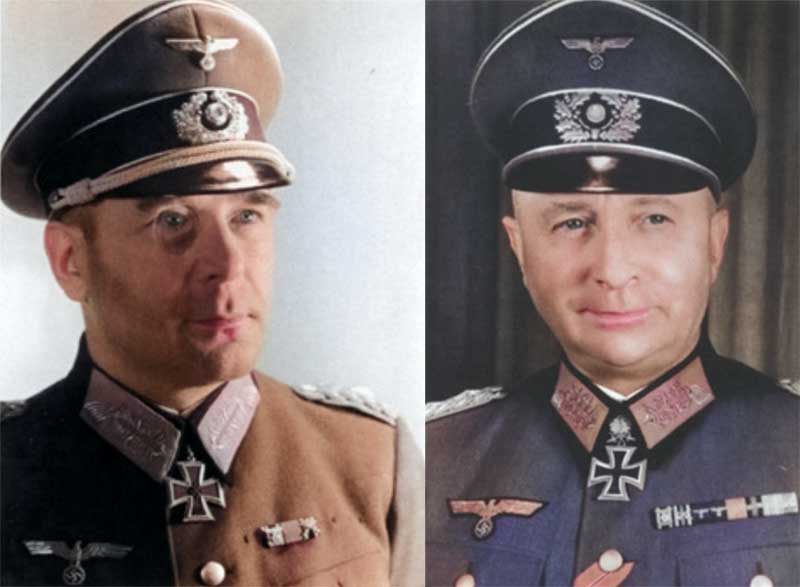
General Leutnant Hans Krebs (1898-1945) served as Model's chief of staff at Army Group 9 from 1942 to 1943, subsequently at Army Group Centre in 1944, and ultimately at Army Group B. Krebs was proficient in Russian and possessed a solid understanding of Russian military tactics, yet he lacked the flamboyance of Model, rendering him suitable for the role of chief of staff. (Bundesarchiv, Image 146-1978-111-10A)
Right:
General Josef Harpe (1887-1968) served as Model's most effective subordinate commander from 1942 to 1945. Harpe effectively commanded the XXXXI Armeekorps (mot.) at Rzhev and Kursk, subsequently assuming control of AOK 9 from Model in November 1943, and engaged in combat alongside him in Poland and northern Ukraine. (Bundesarchiv, Image 146-1981-104-30)
HArko 307 managed approximately 260 medium artillery pieces, and, due to Model's prior strategizing, it had designated pre-planned engagement zones in all essential sectors. Consequently, due to inadequate Soviet operational security protocols, Model took several weeks to fortify his defenses. He collaborated with Generalfeldmarschall Günther von Kluge to formulate contingency plans for the potential reception of up to three additional Panzer divisions from other sectors within Heeresgruppe Mitte, should the situation warrant it.
Operation Mars commenced on the morning of 25 November 1942 with four concurrent attacks along the perimeter of the Rzhev salient. Zhukov deployed more than 800,000 assault troops and 2,000 tanks to annihilate AOK 9. Konev's Western Front executed Zhukov's primary initiative, which involved the 20th Army assault on Arnim's XXXIX Panzerkorps along the Vazuza River on the eastern flank of the salient. Despite assembling 53 artillery regiments in this confined area, snow and fog significantly impaired the 90-minute Soviet artillery barrage, and the unharmed German infantry positions repelled three rifle divisions, inflicting 50 percent casualties.
Encouraged by Zhukov, Konev persistently launched successive infantry assaults into the “Rzhev meatgrinder” until he finally achieved a minor breakthrough. Konev prematurely deployed his mobile units—the 6th Tank Corps and the 2nd Guard Cavalry Corps—to exploit the gap, resulting in a disordered traffic jam and a favorable situation for Model's concentrated artillery. When the Luftwaffe deployed Stuka (German dive bomber and ground-attack aircraft) sorties to assist AOK 9, Model directed them toward Konev's armored congestion, resulting in significant destruction.
Konev's mobile forces advanced 12 kilometers (8 miles) westward and severed the Sychevka-Rzhev railway line; however, he failed to expand the 20th Army's breach in the German front, leaving his most capable units stretched thin in a narrow salient. Arnim executed a clever tactical defense and subsequently launched a counter-offensive on 29 November with the 5th and 9th Panzer Divisions, which encircled Konev's mobile group and annihilated it in a classic Kessel battle.
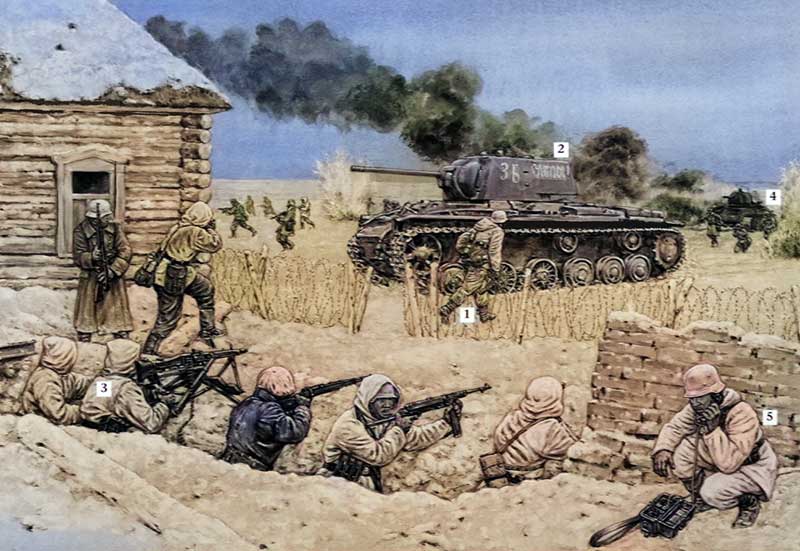
Kampfgruppe Major Kurt Stieber, commanding the II/Panzergrenadier Regiment 14 from the 5. Panzer-Division, tasked Stieber with the defense of the fortified village of Grediakino. Upon the commencement of Operation Mars by the Soviet 20th Army on the morning of 25 November 1942, it quickly became evident that Stieber held a pivotal position at the core of the adversary's planned axis of advance. Model instructed Stieber to maintain control of Grediakino at all costs to confine the Soviets to a limited gap in AOK 9's uninterrupted front. Stieber's defenses comprised several robustly built bunkers and pillboxes strategically positioned around the village and linked by communication trenches. Following a severe artillery bombardment, the Soviet 42nd Guards Rifle Division and 93rd Tank Brigade launched an assault on Grediakino. Stieber's forces repelled the initial assault and annihilated ten tanks; however, the 20th Army deployed additional armor and infantry to this sector, initiating a succession of unyielding attacks.
The 25th Tank Brigade and several Soviet infantry units penetrated the western perimeter of the village in the late afternoon, only to face repulsion in close combat. German Panzerjägers (1) confront a KV-1 tank (2) utilizing the newly developed Haft-Hohlladung magnetic anti-tank mine, while an MG-42 team (3) suppresses the accompanying Soviet infantry (4). A forward observer utilizing a field telephone (5) requests 81mm mortar fire. Stieber also successfully repelled this attack, but nightfall encircled Grediakino. Nonetheless, Stieber maintained control of Grediakino for six days until his battalion diminished from approximately 300 troops to merely 119 effective personnel and was nearly depleted of ammunition. He subsequently deserted Grediakino and traversed Soviet lines to reunite with German forces on the Vazuza. During the siege, Model effectively bolstered Stieber's strained defense through prompt aerial resupply drops and artillery assistance. Ultimately, Operation Mars was unsuccessful due to the Soviet failure to swiftly breach intact German defensive positions.
The Kalinin Front, under Purkaev, launched assaults on the Rzhev salient at three locations: two principal offensives on the western flank by the 22nd and 41st Armies targeting General der Panzertruppen Josef Harpe's XXXXI Panzerkorps and a supplementary attack in the north by the 39th Army against XXIII Armeekorps. The 41st Army made a significant breakthrough south of Belyi by infiltrating the vulnerable 2. Luftwaffen-Feld-Division. They then advanced the 1st Mechanized Corps and the 6th Rifle Corps 35 km eastward to the Nacha River, where the 1. Panzer-Division halted them. Simultaneously, the 22nd Army breached a significant gap in the northern section of Harpe's front in the Luchesa Valley, subsequently advancing the 3rd Mechanized Corps through it. Harpe's entire corps was evidently on the brink of disintegration due to these two breaches. The 39th Army in the north achieved gradual yet consistent progress.
The commander confronted four concurrent enemy offensives along the perimeter of his forces, yet he swiftly evaluated the most perilous threats and dispatched sufficient troops to reinforce local defenses while mobilizing his armor for counterattacks. By 30 November, Arnim had secured his sector; however, the circumstances in Harpe's sector deteriorated as the two Soviet mechanized corps advanced eastward. Model requested Kluge to deploy the 12th, 19th, and 20th Panzer Divisions from army group reserves. Kluge concurred, but their arrival would require several days, compelling Model to engage in a desperate defensive action in the west until the Panzers reached the front. Harpe's forces executed an exceptional defense of Belyi, hindering the union of the two Soviet assault armies and leaving their mechanized spearheads at the boundary of extended, vulnerable salients.
By early December, the Soviet offensives had stagnated due to German resistance, significant casualties, and the challenges of maintaining supply lines for their spearheads. Now, Model deployed the 19th and 20th Panzer Divisions against the flank of the 41st Army's extensive salient south of Belyi, and by 9 December, its spearhead had been encircled in another Kessel. A week-long battle of annihilation completely decimated the 1st Mechanized Corps and the 6th Rifle Corps. Simultaneously, Harpe employed the “Großdeutschland” Division to encircle the incursion of the 3rd Mechanized Corps.
Ironically, the supporting offensive by the 39th Army in the north was the sole endeavor that accomplished enduring success, compelling the XXIII Armeekorps to retreat several kilometers. By December 20, Zhukov ultimately acknowledged the failure of Operation Mars and terminated the offensive. The lines and spirit of AOK 9 had been altered yet remained intact.
Model's triumph over Operation Mars constituted a significant achievement in his career and stands as one of the most remarkable defensive victories of World War II. Had Zhukov defeated AOK 9 in the Rzhev salient simultaneously with the encirclement of AOK 6 at Stalingrad, the entire German front in the east could have potentially disintegrated during the winter of 1942-43. Soviet casualties during Operation Mars were devastating: around 100,000 fatalities and 235,000 injuries, constituting 40 percent of the deployed forces. Armor losses approached 85 percent, with the Germans asserting that 1,852 tanks were annihilated.
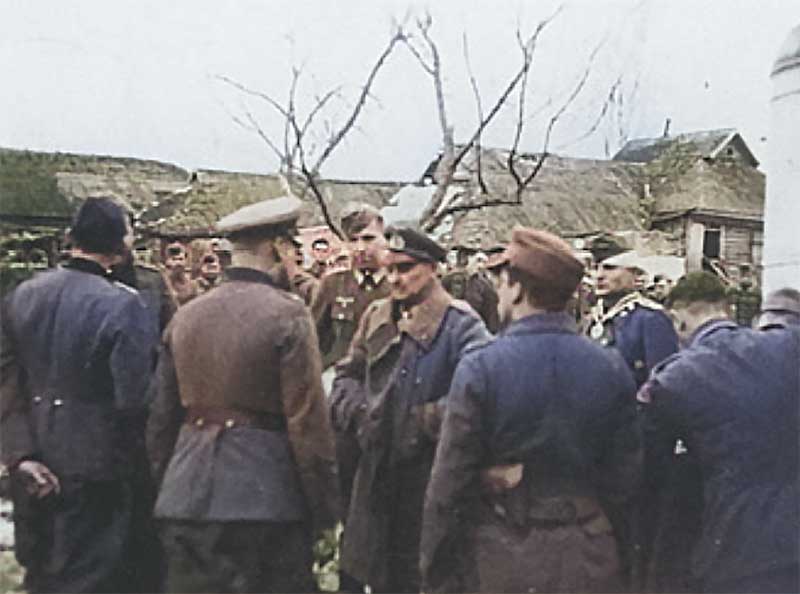
The Germans either annihilated or incapacitated six elite Soviet corps. The losses of AOK 9 were considerable; however, all its units retained combat effectiveness. It is crucial to acknowledge that Model's triumph relied on the presence of six Panzer divisions, which were becoming increasingly scarce. The severe damage sustained by both Soviet fronts, Model required 30 divisions to maintain control of the Rzhev salient, a resource that the Ostheer could no longer sustain following the defeat at Stalingrad.
Despite Hitler's refusal to abandon the Rzhev salient during 1942, he became more receptive to Model's recommendations following his notable victory. Model's assertion that evacuation would liberate eight divisions for the OKH to establish a minor reserve significantly influenced Hitler. Model contended that establishing a centrally managed “European Reserve” would enhance the Wehrmacht's capacity to address crises; Hitler disregarded this suggestion and opted to utilize the reserve for a new summer offensive.
Hitler authorized Model to withdraw from the salient on 6 February 1943. Model's personnel devised Operation Büffel (Buffalo) to execute the evacuation through a sequence of phased withdrawals. Unlike Zhukov, Model imposed strict security measures on the evacuation plans, which prevented the Soviets from knowing about the withdrawal until it started on 1 March. AOK-9 vacated Rzhev on March 3 and Sychevka five days later, retreating to new phase lines every few days. Upon detecting the German retreat, Konev and Purkaev commenced a rapid pursuit; however, German rearguards inflicted significant casualties on them. Model suffered negligible losses during the retreat, and once the evacuation was complete, he repositioned his army from the left flank of Heeresgruppe Mitte to its right flank in the Orel salient.
World War II - Operation Zitadelle, April-July 1943
Following Generalfeldmarschall Erich von Manstein's recapture of Kharkov on 14 March 1943, an unusual calm covered the Eastern Front. Like most German senior commanders, Model aimed to maintain a defensive posture and rebuild his forces to counter the impending Soviet offensives. Manstein, emboldened by his victory at Kharkov, urged Hitler and the OKH for an offensive to encircle the Soviet Central and Voronezh Fronts in the Kursk salient as soon as spring weather allowed. In 1943, Hitler became convinced that the Wehrmacht required a substantial operational triumph in the East to maintain strategic initiative and to restore the German public confidence in eventual victory following the Stalingrad disaster.
He speculated that engaging Model's AOK 9 in the Orel salient and Manstein's 4. Panzerarmee (PzAOK 4) near Kharkov to execute a traditional pincer maneuver against the 180 km (112 miles) wide base of the Kursk salient could encircle and annihilate eight Soviet armies, thereby providing Germany a significant reprieve.
Colonel General Kurt Zeitzler, chief of staff of the OKH, initiated the enhancement of Manstein's optimistic concept into Operation Zitadelle, while Model exhibited a significantly less optimistic outlook regarding the potential for offensive success. AOK 9 was inadequately prepared for a large-scale offensive, with its infantry divisions operating at merely 60 percent or less of authorized strength and possessing considerably fewer armored units and artillery compared to PzAOK 4. Despite receiving considerable reinforcements, Model opposed the notion of a frontal assault against a formidable Soviet defense, informing Zeitzler that the offensive would result in “significant losses and no success”.
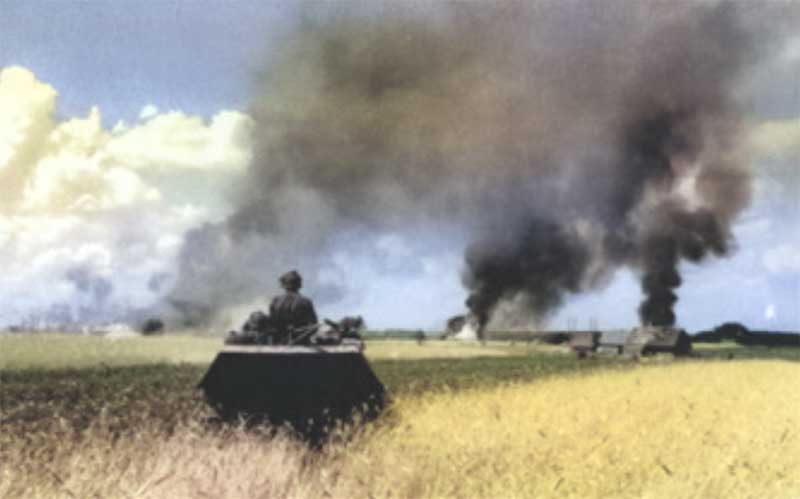
Model agreed with Guderian in designating Zitadelle as “senseless” and submitted a comprehensive memorandum articulating his reasoning to the OKH in late April. As Hitler was reevaluating the prudence of Zitadelle, he utilized Model's memorandum to justify a delay. Rather than following Model's advice and canceling Zitadelle, Hitler chose to postpone until both AOK 9 and PzAOK 4 received additional troops and tanks, particularly the new Tigers and Panthers. Both factions delayed Operation Zitadelle an additional four times, allocating further resources to the region for the critical confrontation. Although Model's AOK 9 acquired no Panthers and merely one battalion of Tigers, it successfully amassed 9,174 tons of fuel and 12,300 tons of ammunition; consequently, Model's Panzers would not suffer from fuel shortages as the German offensives had in 1941-42. Hitler designated 5 July as the commencement date for Operation Zitadelle.
Upon the start of Operation Zitadelle, Model expanded its AOK 9 to 21 divisions, which included six Panzer divisions, by redistributing armor and artillery from the remaining units of Kluge's Heeresgruppe Mitte. Alongside the Tiger battalion, the OKH dispatched Model, two battalions of Ferdinand tank destroyers, and one battalion of Sturm Panzer IVs. Model anticipated that with these reinforcements, his Army Group Center 9 would assault Konstantin Rokossovsky's Central Front in the northern sector of the Kursk salient, breach three defensive lines, and then connect with Manstein's forces near Kursk.
Notwithstanding his reservations, Model focused ten of his divisions and nearly 1,000 tanks against a narrow 19 km (12 mile) penetration corridor held by General Nikolai P. Pukhov's 13th Army, which consisted of two rifle divisions in the front line and two additional divisions in the second line of defense. General der Panzertruppen Joachim Lemelsen identified XLVII Panzerkorps as his primary effort and XXXXI Panzerkorps, commanded by Harpe, as the supporting effort. The XXIII Armeekorps and XXXXVI Panzerkorps would conduct minor supporting assaults with infantry on the flanks of AOK 9, but their principal objective was to distract Rokossovsky from the actual Schwerpunkt in the center.
Due to his proactive battlefield reconnaissance, Model was cognizant that the Soviet 13th Army had deployed over 3,000 mines per kilometer (5,000 per mile) of front and had established a robust anti-tank defense in depth. In contrast to Manstein, he opted to deploy only a single Panzer division on the initial day of the offensive, depending instead on his heavy armor, artillery, and engineers to breach the Soviet defensive belts for subsequent exploitation by his Panzers. Model exhibited greater conservatism than Manstein in strategizing his segment of Zitadelle, as he acknowledged that the 2. Panzerarmee (PzAOK 2) occupied the 250 km (155 mile) long northern section of the Orel salient with merely 17 divisions.
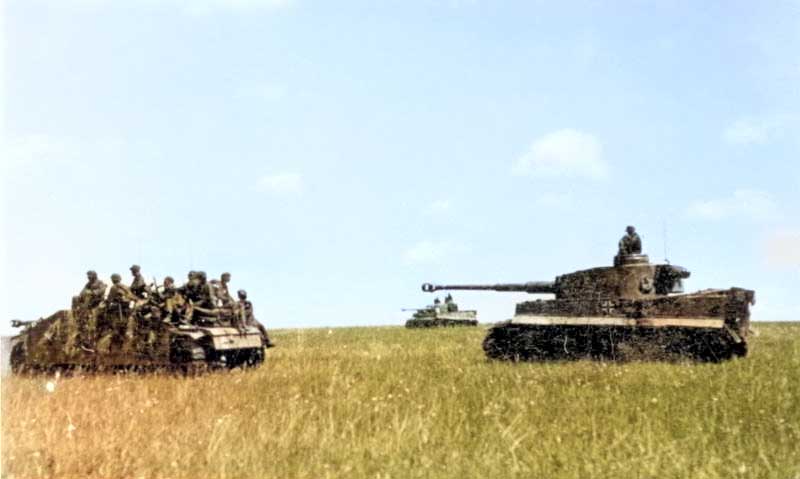
The Soviet Western and Bryansk Fronts possessed a four-to-one advantage in both personnel and armor against this tenuous defense, enabling them to assault Model's rear while he was engaged with Zitadelle. Consequently, Model aimed to retain the maximum amount of his armor in reserve to counter Soviet maneuvers. He discreetly initiated the establishment of the Hagen Stellung (Hagen Line) at the base of the Orel salient, disobeying Hitler's explicit directive against constructing rearward defenses, thereby ensuring that AOK 9 would possess fortified positions for potential retreat.
Following a rainy night that transformed the battlefield into a muddy quagmire, Operation Zitadelle commenced at 0430 hours on 5 July, with Model's artillery bombarding the Soviet 13th Army positions for 80 minutes. His principal tactical aim was to capture the elevated terrain south of Ol'khovatka, which would serve as the essential launch point to advance towards Kursk, located 70 km (44 miles) to the south. Lemelsen's corps, comprising solely the 6th Infantry Division, 20th Panzer Division, and the Tiger battalion, managed to breach 5 kilometers (3 miles) of the 15th Rifle Division's initial defensive line in under four hours, but was subsequently halted before reaching the second line of defense.
To their left, Harpe's corps, employing two infantry divisions, the Ferdinands (tank destroyers) and the Sturm Panzers, inflicted considerable damage on the 81st Rifle Division's defenses north of Ponyri. The efficient close air support from Luftflotte 6 was essential in facilitating Model's Schwerpunkt advance through the formidable Soviet defenses. By the conclusion of the initial day of the offensive, Model's forces had created a breach 15 kilometers (9 miles) wide and up to 8 kilometers (5 miles) deep, incurring over 7,000 casualties; however, no breakthroughs were realized. Throughout the day, Model remained in perpetual motion, visiting each corps headquarters to assess the tactical situation in its sector, reallocating engineer units to clear previously undiscovered minefields, and coordinating his artillery and Luftwaffe resources against Soviet resistance strongholds.
The pivotal command decision confronting Model as army commander was determining the optimal time and location to deploy his armored reserves. Recognizing that the 29th Rifle Corps' two front-line divisions and a tank brigade had suffered significant losses on the initial day, Model commenced the measured deployment of his armored units on 6 July, integrating the 2nd, 9th, and 18th Panzer Divisions into the conflict to assist in penetrating Pukhov's secondary defensive line.
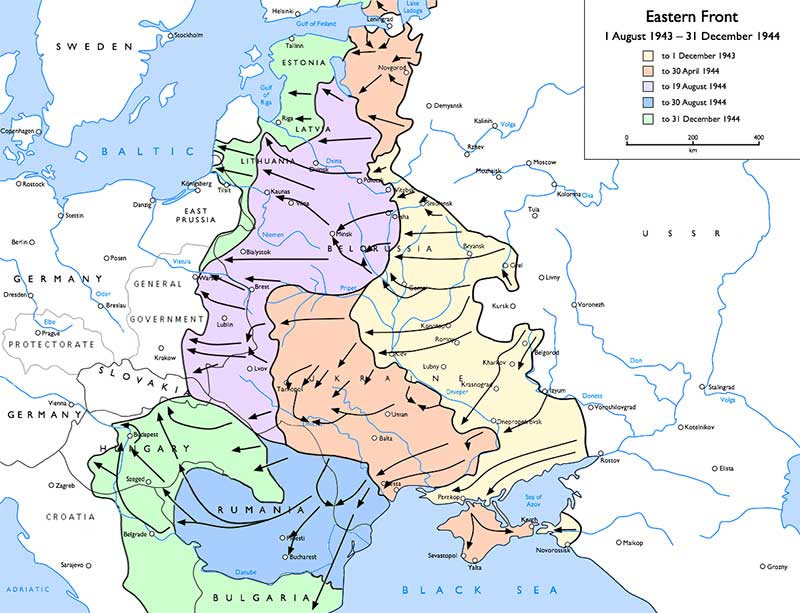
At this stage, Rokossovsky failed tactically by deploying his primary armored reserve—the 456 tanks of Lieutenant-General Aleksei G. Rodin's 2nd Tank Army—prematurely, in fragments, and directly into Model's Schwerpunkt. A significant tank confrontation commenced in the undulating landscape west of Ponyri, at the boundary of the Soviet second defensive belt. By nightfall on the second day, the dedication of the 2nd Tank Army postponed Model's assault on Pukhov's secondary defensive line for 24 hours; however, this led to the dispersion of much of Rokossovsky's armored units, rendering them unavailable for a coordinated counter-offensive.
Recognizing the momentary opportunity, Model commanded Harpe to initiate a significant three-division offensive against Ponyri on 7 July; however, the substantially reinforced 307th Rifle Division successfully retained control of the village. Simultaneously, Lemelsen persisted in advancing toward Ol'khovatka with three Panzer divisions; however, the 17th Guards Rifle Corps restricted his progress to a mere 2–3 kilometers (1-2 miles). Rokossovsky consistently reinforced the battle whenever the Germans exhibited indications of localized success, resulting in an attritional conflict that could yield only one outcome for the outnumbered Germans. On 8 July, Model deployed his final reserves, the 4th Panzer Division, but an overwhelming barrier of Soviet tanks, infantry, artillery, and mines halted his progress.
Following two additional days of waning hostilities, Model acknowledged the failure of his portion of the offensive and transitioned his forces to a defensive attitude. Three days later, Hitler cancelled Operation Zitadelle.
Model's forces incurred 20,720 casualties during the week-long offensive, comprising 4,567 killed or missing (approximately 6 percent of AOK 9's total strength). AOK 9 experienced the destruction of 88 tanks and assault guns, along with damage to approximately 250 units. Nonetheless, Model retained significant combat capability in AOK 9, comprising six relatively intact Panzer divisions and six infantry divisions. On the contrary, Rokossovsky's Central Front incurred 33,897 casualties, including 15,336 fatalities (approximately 10 percent of his deployed forces). The Soviet Union incurred losses of 526 tanks out of 1,029 deployed in this sector. Model failed in accomplishing its operational goals of inflicting disproportionate losses on the adversary or capturing critical terrain. However, his AOK 9 was in significantly better condition than Manstein's Heeresgruppe Süd, preparing it to face the anticipated Soviet counter-offensives after the unsuccessful Operation Zitadelle.
World War II - Holding off Operation Kutuzov, July-August 1943
In anticipation of Operation Zitadelle during the spring, the Soviet Stavka instructed the Bryansk, Western, and Central Fronts to prepare Operation Kutuzov, a counterattack aimed at neutralizing the German-held Orel salient, set to commence immediately following the defeat of the German offensive. Following the failure of Zitadelle and the presumed incapacitation of AOK 9, the Stavka directed the Bryansk and Western Fronts to initiate Operation Kutuzov by assaulting PzAOK 2 on the northern flank of the Orel salient. To bolster AOK 9 for Operation Zitadelle, they divested this formation of armor and artillery, leaving it with minimal reserves. The Soviet Western Front concentrated the 11th Guards Army, comprising twelve fully equipped rifle divisions and three artillery divisions, against the diminished PzAOK 2. The Stavka expected that the vanguards of the Western and Bryansk Fronts would arrive in Orel within 48 hours, leading to the disintegration of the salient.
The initial day of the Soviet offensive began dramatically on the morning of 12 July, as the 11th Guards Army breached a vulnerable sector near Ul’ianovo with six rifle divisions, subsequently deploying two tank corps to penetrate 10 km (6 miles) into the German rear. The situation deteriorated on 13 July as the Soviets deployed additional forces and persisted in their advance. Model spent two days insisting on command authority over PzAOK 2, which was not given until 14 July. In a state of desperation, Hitler ultimately appointed Model to command both PzAOK 2 and his own AOK 9, instructing him to reestablish the front line.
This created a wise military decision, grounded in the principle of unity of command, placing Model in command of the defense of the entire Orel salient, whereas the adversary had three distinct front commanders assigned to execute Operation Kutuzov. Model promptly started the redeployment of three Panzer divisions under Harpe to contain the incursion by the 11th Guards Army while also dispatching reinforcements to Major General Lothar Rendulic, commander of XXXV Armeekorps, which was resisting the Bryansk Front on the eastern flank of the salient. Rendulic executed a skilled defense with restricted resources and frustrated the initial assaults by the Bryansk Front, gaining commendation from Model. On 15 July, Stalin directed Rokossovsky to engage in the offensive with his Central Front; however, his troops remained significantly weakened from the combat near Ponyri, allowing AOK 9 to easily repel Rokossovsky's initial assaults.
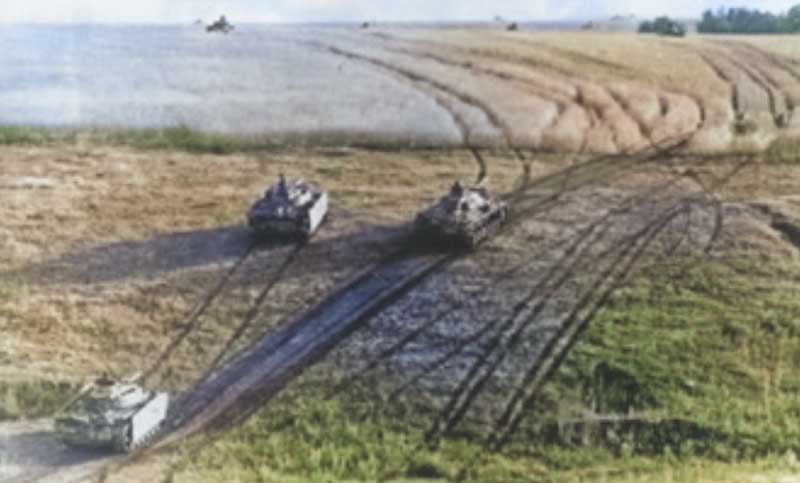
By mid-July, Model was tasked with overseeing 37 German divisions comprising 475,000 troops and 825 tanks while repelling simultaneous assaults from three Soviet fronts that fielded over 1.2 million troops and 2,800 tanks. Instead of employing conventional corps organization, he assigned Harpe to lead the forces on the northern flank, Rendulic to oversee those in the east, and Lemelsen to command the southern contingent. Despite the availability of three tank armies the Soviets did not deploy them in a coordinated manner. The commander strategically repositioned his Panzer divisions within the narrowing salient, exemplifying the use of interior lines, successfully repelling successive Soviet assaults.
Shortly, the Soviets encountered an attritional conflict, but this time, they suffered greater losses. On 19 July, despite the infantry's inability to breach Rendulic's defenses, the Bryansk Front resolved to deploy the 700 tanks of General-Lieutenant Pavel S. Rybalko's 3rd Guards Tank Army, prompting Model to methodically send his remaining heavy armor to counter them. Rybalko's armored division lost 669 tanks near Orel during a week of intense tank engagements, forcing it to withdraw from combat without achieving its objectives.
Despite inflicting significant casualties on all three Soviet fronts, Model's forces were also suffering from fatigue and losses; therefore, he commanded the rushed completion of the Hagen Stellung. He prioritized the evacuation of 20,000 German casualties from hospitals in the Orel salient, along with 53,000 tons of supplies. On 26 July, the 500 tanks of the 4th Tank Army engaged in combat, necessitating the deployment of German reserves from other locations within Heeresgruppe Mitte.
By late July, the Ostheer had deployed eight of its 16 Panzer divisions to defend the Orel salient, significantly depleting armored forces along the remainder of the front. Model recognized the impossibility of sustaining the conflict indefinitely and commenced employing his conventional tactics with Hitler—executing effective counterattacks succeeded by appeals for autonomy. Hitler placed his trust in Model, and when Model assured him that he could execute a fighting withdrawal to the Hagen Stellung, thereby liberating Panzer units for subsequent counterattacks, Hitler sanctioned the evacuation of the Orel salient. Operation Herbstreise (autumn trip) began on 1 August, with both PzAOK 2 and AOK 9 progressively retreating towards the Hagen Stellung.
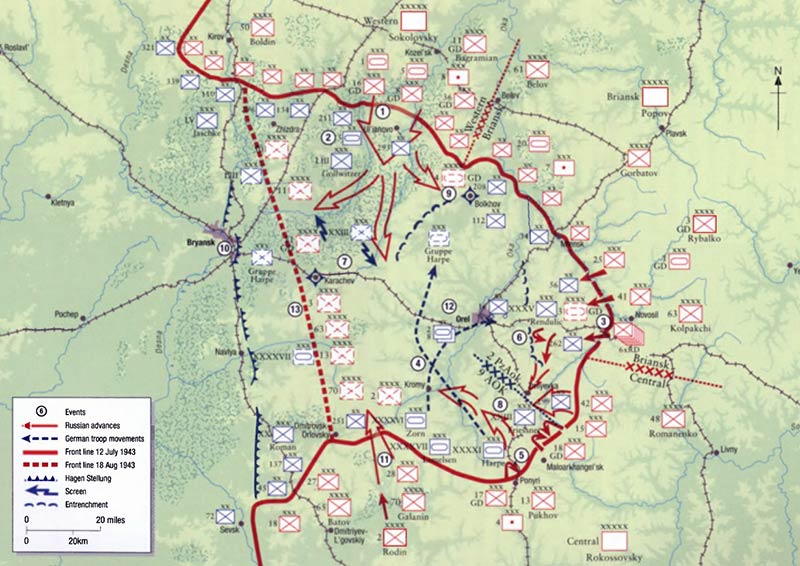
- On 12 July, Operation Kutuzov commences as the 11th Guards Army of the Western Front assaults the LIII Armeekorps of PzAOK 2. Bagramian assembles nine rifle divisions and an artillery corps to confront the German 293rd Infantry Division near Ul'ianovo, breaching the German front. Model subsequently deploys the 1st and 5th Tank Corps into the penetration corridor, where they commence dispersing.
- On 13 July, PzAOK 2 fails to contain the breach created by the 5. Panzer-Division but successfully halts additional Soviet progress westward.
- On 13 July, the Bryansk Front assaults Rendulic's XXXV Armeekorps utilizing three rifle divisions from the 3rd Army and six rifle divisions from the 63rd Army. Rendulic executes a highly proficient defense that restricts the progression.
- On 14 July, Hitler appointed Model to command both PzAOK 2 and his own AOK 9. Model promptly initiates the redeployment of Harpe's XXXXI Panzerkorps to contain the incursion by the 11th Guards Army while also dispatching the 2nd and 8th Panzer Divisions to bolster Rendulic's XXXV Armeekorps. Model designates Harpeto to command the forces on the northern flank, Rendulic to oversee those in the east, and Lemelsen to lead the southern contingent.
- On 15 July, Stalin instructs Rokossovsky's Central Front to participate in the offensive; however, his troops remain significantly diminished from the engagements near Ponyri, allowing AOK 9 to easily repel the initial assaults by the 13th and 48th Armies.
- On 19 July, the Bryansk Front deploys 700 tanks from General-Lieutenant Rybalko's 3rd Guards Tank Army against XXXV Armeekorps; however, Model has established a formidable defense east of Orel with three Panzer divisions, effectively halting Rybalko's advance.
- On 21 July, Model relocates XXIII Armeekorps to close the gap between LV Armeekorps and Gruppe Harpe.
- Rybalko redeploys his 3rd Guards Tank Army southward from 21 to 25 July to support a new offensive by the 13th and 48th Armies, gradually dismantling Lemelsen's XLVII Panzerkorps, now reduced to solely infantry divisions. Zmiyevka has been seized.
- On July 26, Badanov's 4th Tank Army, comprising 500 tanks, entered the conflict, compelling Gruppe Harpe to withdraw from Bolkhov.
- On 31 July, Hitler ultimately permits a retreat from the Orel salient. On 1 August, Operation Herbstreise commences, with both PzAOK 2 and AOK 9 progressively retreating towards the Hagen Stellung.
- On 4 August, Rokossovsky's 70th Army and the 2nd Tank Army commenced an assault on the southern flank of the Orel salient, thereby encircling Model's right flank.
- On August 5, the Soviets evacuate Orel and cause his death.
- 18 August: The Operation Kutuzov offensive comes to a halt short of the Hagen Stellung.
In contrast to Operation Büffel, the Soviets promptly identified the German retreat and intensified their assaults. The XXXXVI Panzerkorps suffered significant losses, resulting in the death of its commander. While dispatching his personnel to establish a new headquarters in Bryansk, Model remained in Orel with only one staff officer. Hitler contacted Model and insisted that he promptly demolish the primary bridge over the river Oka; however, Model disregarded this order and postponed action until his rearguard, the 12th Panzer Division, had crossed to the west bank. On 5 August, Soviet forces entered the devastated and ablaze city of Orel.
In the subsequent fortnight, the Soviets were unsuccessful in encircling Model's rearguard as it retreated from one defensive line to another. The advancing Soviets incurred substantial losses. Operation Kutuzov culminated on 18 August, falling short of the Hagen Stellung. The operation lasted 38 days, allowing the Soviet West, Bryansk, and Central Fronts to reclaim the Orel salient, resulting in 429,890 casualties, including 112,000 fatalities. The three Soviet tank armies suffered significant losses, totaling 2,586 tanks. PzAOK 2 and AOK 9 incurred a total of 60,804 casualties and lost 250 tanks during the withdrawal from the Orel salient. Model secured another defensive triumph by preventing the encirclement of his forces and inflicting casualties at a ratio of nearly seven to one on his adversaries, despite the enemy's superior capacity to replenish their losses. Remarkably, Model succeeded in reaching the Hagen Stellung with 11,732 Soviet prisoners in custody—an extraordinary achievement for a “defeated” army.
Although Model's newly established defensive line near Bryansk was relatively robust, the remainder of the German front was in disarray by August 1943. The Soviet Operation Rumyantsev counter-offensive devastated Manstein's Heeresgruppe Süd on 5 August, and after Kharkov's loss on 23 August, it was in complete retreat towards the Dnepr River. Unable to dislodge AOK 9 and PzAOK 2, the Soviet Western Front commenced an assault on the German AOK 4 on Model's left flank on 7 August, followed by Rokossovsky's Central Front attacking AOK 2 on his right flank on 26 August.
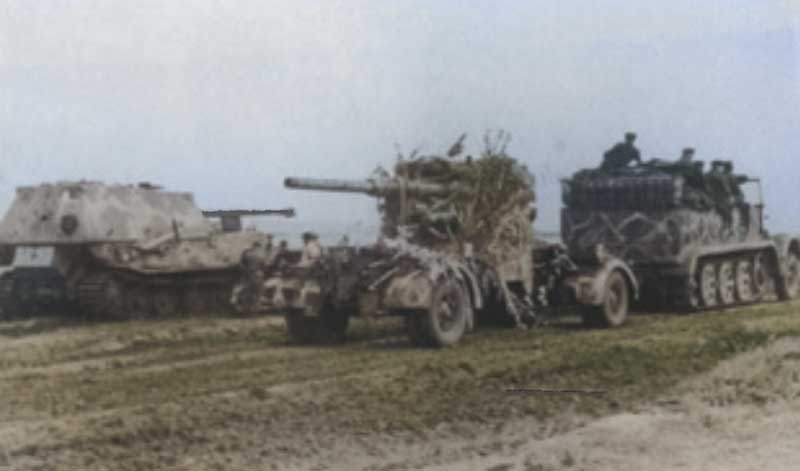
The OKH promptly depleted Model of his most effective infantry divisions and nearly all Panzer divisions to bolster the faltering sectors of his neighbors, complicating his own circumstances when the Bryansk Front resumed its assaults on the Hagen Stellung on 7 September. AOK 2 and AOK 4 were rapidly retreating despite receiving reinforcements from Model, while AOK 9 faced the threat of encirclement on both flanks. Model had no alternative but to evacuate Bryansk on September 17 and withdraw toward the Dnepr River. Upon AOK 9's arrival at the new line, he obtained a six-week reprieve. After his front was temporarily stabilized, a fatigued Model requested leave in early November, only to discover that Hitler had opted to assign him to the Führerreserv, awaiting a new deployment.
World War II - Sword and Shield on the Northern Front, January-March 1944
Model resided in Dresden with his family from November 1943 to January 1944. Hitler abruptly summoned Model to Wolfsschanze on 28 January 1944, where he announced his intention to replace Generalfeldmarschall Georg Wilhelm von Küchler and appointed Model to assume command of Heeresgruppe Nord. On 14 January, the Soviet Leningrad and Volkhov Fronts initiated a substantial offensive that decimated the German 18th Army (AOK 18) front in the vicinity of Leningrad. Küchler had not only failed to halt the Soviet advance, but he had also commanded an unauthorized retreat to the Panther Stellung. Generals' preference for retreat over combat infuriated Hitler, prompting him to command Model to reach Heeresgruppe Nord's headquarters in Pskov, halt the withdrawal, establish a new front, and repel the Soviet offensives.
Upon arriving in Pskov in the early hours of 31 January, Model swiftly assessed the dire situation of AOK 18. On the northern flank of Model, two armies from the Leningrad Front had reached the periphery of Narva, which remained under the control of the remnants of III SS-Panzerkorps and XXVI Armeekorps. Hitler mandated the defense of the Luga River, where three additional Soviet armies were advancing towards the center; however, AOK 18 had only 17,000 combat troops spread over a 115 km (70 mile) front. In contrast to his experiences at Rzhev and Orel, Model had minimal armor or air support in Heeresgruppe Nord, despite the OKH's assurance that two Panzer divisions would arrive shortly.
Model devised strategies to impede and ultimately halt the Soviet advance, which he termed Schild und Schwert (sword and shield); he executed tactical withdrawals to accumulate sufficient forces for localized counterattacks aimed at reclaiming critical terrain. He additionally mandated the establishment of hedgehog defenses at Narva and Luga while repurposing thousands of rear-area personnel to generate new infantry replacements.
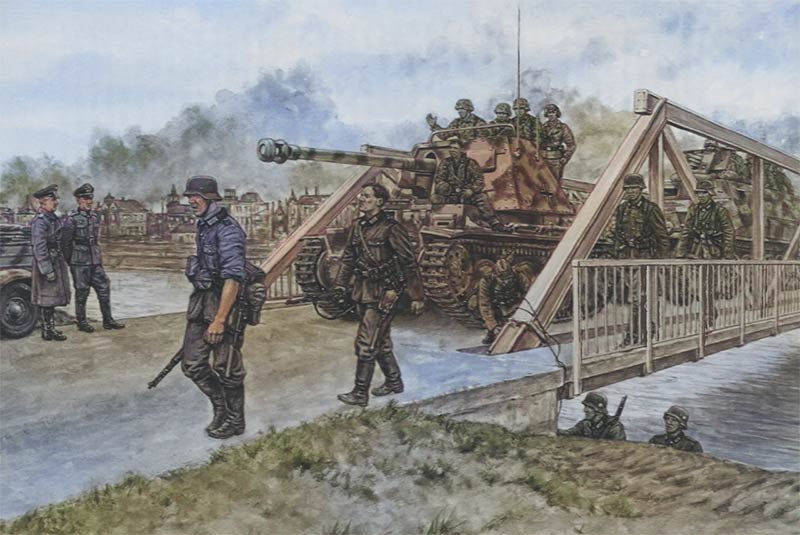
Three Soviet fronts assaulted Model's Army Group Center 9 in the Orel salient after the unsuccessful Operation Zitadelle. Despite Model's ability to leverage the advantage of interior lines to maneuver his Panzer divisions and prevent a Soviet breakthrough, he was compelled to engage in a delaying action retreating to the Hagen Stellung. As Soviet armor neared the burning Orel, Model stayed in the city with only one staff officer, Major Gerd Niepold, and the rearguard of the 12th Panzer Division. Concerned that the Soviets would capture the primary road bridge over the Oka intact, Hitler contacted Model directly from East Prussia and insisted that he demolish the bridge without delay. Model refused to surrender his defensive position on the opposite bank of the river and intentionally disregarded Hitler's directives for most of the day. The 12th Panzer Division ultimately destroyed the bridge after crossing the Oka. Model stands with Niepold as the rearguard of the 12th Panzer Division retreats across the bridge; a soldier on one of the vehicles salutes Model as he passes. Simultaneously, German engineers are preparing to destroy the bridge. Despite later accusations that Model was blindly obedient to Hitler, he consistently put the welfare of his troops above such concerns.
Model visited Narva on 2 February to examine the fortifications of General der Infanterie Otto Sponheimer. Sponheimer informed Model that without reinforcements, the Soviet 2nd Shock Army would launch a significant offensive to seize Narva. Despite having limited resources, Model recognized that the loss of Narva would destabilize the northern section of the Panther Stellung and result in the swift loss of Estonia; thus, he expedited the deployment of the Tigers from schwere Panzer Abteilung 502 to reinforce the defense. He designated Panzergrenadier-Division “Feldherrnhalle” for Narva upon its arrival from Heeresgruppe Mitte. Despite the Soviet 2nd Shock Army establishing bridgeheads across the Narva River and nearly encircling the defenders, Sponheimer's forces executed a remarkable and fervent defense that thwarted all assaults for the subsequent six months.
After securing his left flank, Model focused on the center, where the remnants of XXXVIII and L Armeekorps were attempting to establish strongpoints around Luga. While three armies from the Volkhov Front progressed at a pace of 16 km (10 miles) per day toward Luga, the Soviet 42nd Army traversed the Luga River and commenced encircling the city from the west. Model initiated the inaugural Schild und Schwert operation by instructing the XXVI Armeekorps to concentrate three divisions and subsequently launch a counter-offensive against the 42nd Army to prevent its encirclement. Despite the inclusion of the understrength 12th Panzer Division in the assault, it did not constitute a formidable strike force.
The assault on 9-10 February devolved into a chaotic meeting engagement that momentarily inhibited the Soviet advance and devastated the participating units. After the Soviets successfully encircled and destroyed a German infantry regiment, Hitler expressed concern regarding the imminent encirclement of AOK 18 and subsequently sanctioned the evacuation of the Luga position. Notwithstanding Model's assertive rhetoric regarding perseverance and counter-offensives, Hitler ultimately agreed to logic and commanded Heeresgruppe Nord to retreat to the Panther Stellung. By 1 March, Heeresgruppe Nord's front had stabilized temporarily, prompting a grateful Hitler to promote Model to Generalfeldmarschall. At the age of 53, Model was the youngest Generalfeldmarschall (general field marshal) in the Wehrmacht.
World War II - The Führer's Fireman, March-August 1944
The crisis at Heeresgruppe Nord's front had barely diminished when a new emergency emerged in western Ukraine. Following its defeat at Kursk, Manstein's Heeresgruppe Süd faced relentless pursuit across Ukraine, unable to establish an effective front against continuous assaults. An offensive by Zhukov's 1st Ukrainian Front and Konev's 2nd Ukrainian Front successfully encircled the 1st Panzer Army (PzAOK 1), led by Colonel General Hans-Valentin Hube, a former classmate of Model, near Kamenets-Podolsky on 28 March. Hube's Pocket, comprising 20 divisions and exceeding 200,000 troops, represented the most extensive encirclement of German forces on the Eastern Front since Stalingrad.
Unfortunately, Heeresgruppe Süd encircled seven of the nine Panzer divisions, leaving the remaining units—Colonel General Erhard Raus' PzAOK 4 and the Hungarian First Army—too weak to free Hube. Two days later, Hitler dismissed Manstein from command and appointed Model to assume control of the restructured Heeresgruppe Nordukraine.
Model, upon arriving at his new headquarters in Proskurov, implemented Manstein's rescue strategy, which involved Hube's encircled army advancing westward to connect with a relief contingent. Model's inaugural week in command saw Hitler approve the relocation of the II SS-Panzerkorps from Belgium to establish the core of an armored rescue unit. Zhukov's overconfidence in destroying the encircled Germans hindered his awareness of Hube's westward advance and the impending arrival of SS reinforcements. On 7 April, Hube coordinated with II SS-Panzerkorps, resulting in the reintegration of his army into a unified front. Model deployed PzAOK 1 and PzAOK 4 in an arc surrounding the city of L'vov in southern Poland, anticipating that the Soviets would launch their next significant offensive there, as expected by both him and Hitler.
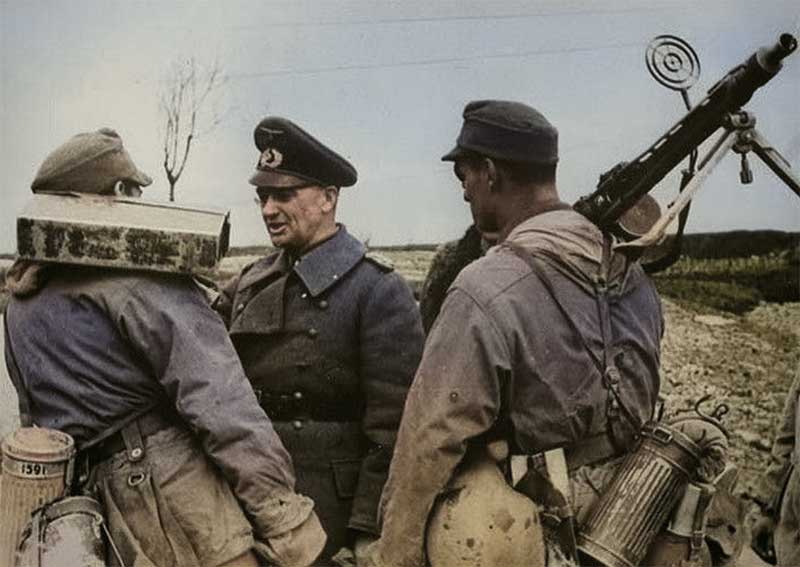
Although PzAOK 1 remained intact, it had lost most of its tanks and artillery in the retreat from the encirclement. Model commanded 475,000 troops, but the divisions, now depleted, had limited firepower and mobility. A notably troubling event for morale was the Soviet encirclement of the 4,500-strong Gruppe Neinhoff in Tarnopol, which Hitler had designated as a Festung (“fortress” - locations designated as Festung were to be defended to the last man). From April 11 to April 20, Model launched a frantic rescue operation, deploying over 100 tanks.
Mud and Soviet opposition hindered the Panzers, preventing them from connecting with the encircled garrison. As a result, only 55 survivors managed to reach German lines. The breach of the encirclement obliterated Major General Egon von Neinhoff and his forces. The Germans experienced a temporary reprieve in May due to the muddy conditions hindering operations; however, Model urged the OKH for reinforcements to counter the anticipated Soviet summer offensive toward L'vov. Regrettably, the OKH opted to reallocate multiple divisions from Heeresgruppe Mitte to bolster Model yet overlooked the accumulation of Soviet forces in Byelorussia.
In mid-June 1944, Heeresgruppe Mitte was under the command of Generalfeldmarschall Ernst Busch, Model's former superior from AOK 16 in France. His command extended from north to south, consisting of 36 divisions and 580,000 personnel. Busch's infantry units were significantly understrength, and he possessed only one Panzer division in reserve. Busch anticipated an imminent Soviet offensive against his front, prompting him to establish a robust defensive line anchored in the fortified cities of Vitebsk, Orsha, Mogilev, and Bobruisk while concentrating his armored and elite units in the center alongside AOK 4. He also presumed that he could maintain this position sufficiently for reinforcements to arrive from adjacent military units.
Regrettably, it was no longer 1942, and Zhukov had assimilated the lesson regarding the dismantling of a fortified German defense. On 22 June, when Operation Bagration commenced, four Soviet fronts initiated a series of coordinated assaults that swiftly obliterated the whole of Heeresgruppe Mitte's front. Rather than assaulting the robust German center, Zhukov initiated his offensive against the more susceptible flanks; while he engaged and encircled a segment of PzAOK 3 at Vitebsk, Rokossovsky executed a similar maneuver against AOK 9 at Bobruisk. Within six days, Heeresgruppe Mitte's flanks were compromised, all four fortified cities were either lost or encircled, and AOK 4 was in complete retreat toward Minsk. When Busch was unable to halt the Soviet onslaught, Hitler dismissed him on 28 June and appointed his reliable “fireman,” Walther Model, to quell the crisis.
Model, who was still in command of Heeresgruppe Nordukraine, received operational control over Heeresgruppe Mitte, leaving Josef Harpe as the acting commander in Lvov. Upon Model's arrival in Minsk, he encountered a catastrophic situation. Heeresgruppe Mitte had incurred 190,000 casualties, constituting one-third of its strength, with only AOK 4 in the center and AOK 2 on the distant right flank retaining any combat capability. It must have been discouraging, even for a resilient soldier like Model, to discover his former commands, XXXXI Panzerkorps and AOK 9, encircled in the Bobruisk Pocket and on the brink of destruction.
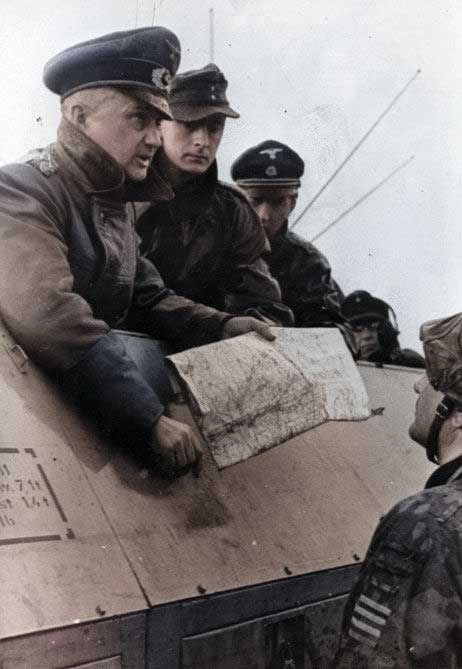
The Soviets were advancing rapidly, with the most formidable presence being the 5th Guards Tank Army's bridgehead across the Berezina River at Borisov. For any other commander, this would have been a wasted and demoralizing ordeal; however, Model excelled in a dire crisis. Hitler instructed Model to maintain control of Minsk. Prior to establishing a defense, the Soviet 5th Guards Tank Army emerged from its bridgehead and encircled the majority of the retreating AOK 4 to the east of Minsk. Model relocated the remnants of AOK 9 to establish a hedgehog defense around Minsk and repositioned the full-strength forces accordingly.
Heeresgruppe Nordukraine deployed the 5. Panzer-Division to create an escape route for the encircled AOK 4 and to keep the 5th Guards Tank Army under control. During a week of intense combat, the 5. Panzer-Division suffered an 86 percent loss of its armored vehicles, while a portion of the troops successfully evaded encirclement. On July 3, the 5th Guards Tank Army entered Minsk. Heeresgruppe Mitte lost 26 divisions and 300,000 personnel in less than two weeks, which forced Model to relinquish Byelorussia and retreat to the Polish border.
Following the capture of Minsk, the Soviet forces progressed westward, arriving at the Polish border by mid-July. Model commenced the restoration of Heeresgruppe Mitte's line by initially reconstructing its flanks, utilizing the relatively unharmed AOK 2 to establish a line anchored at Brest-Litovsk, while PzAOK 4 maneuvered northward to serve as his right flank. The OKH relocated multiple divisions from Ukraine and Estonia to bolster the defense of East Prussia; however, the reinforcements sourced from the adjacent army groups became problematic when the Stavka initiated significant offensives on these fronts as well.
By mid-July, the Soviet 2nd Baltic Front was repelling AOK 16 on the right flank of Heeresgruppe Nord, while the 1st Ukrainian Front had initiated the L'vov-Sandomierz offensive against Heeresgruppe Nordukraine. Despite Harpe's formidable defense, the 1st Ukrainian Front subdued it and seized L'vov on 27 July, subsequently advancing towards the Vistula.
By 17 July, Model had reconstructed a small, continuous front in central Poland; however, Rokossovsky's 1st Byelorussian Front retained considerable combat capability. Rokossovsky concentrated three armies against PzAOK 4's positions near Kovel, creating an 80 km (50 mile) wide breach in their line, and subsequently directed the 2nd Tank Army to advance northwest towards Warsaw. Concurrently, Rokossovsky initiated the encirclement of AOK 2's positions at Brest, posing a threat to encircle an additional eight divisions.
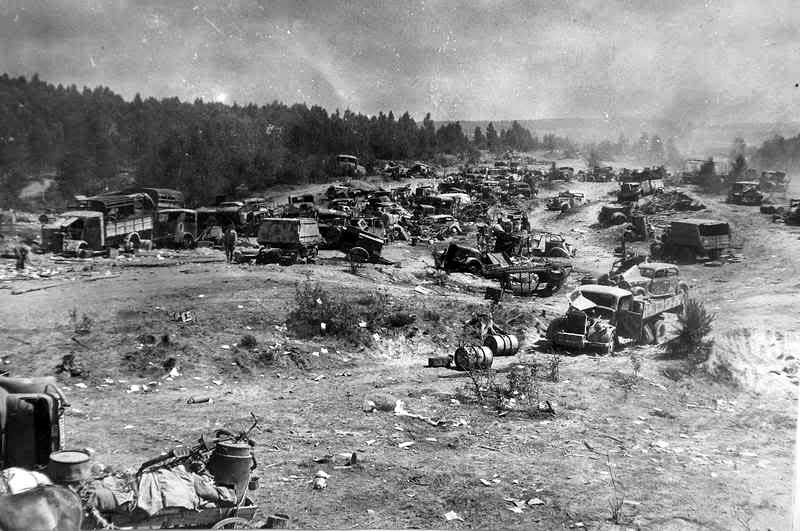
By 23 July, another breach in the front of Heeresgruppe Mitte created a 95 km (60 mile) wide gap between PzAOK 4 and AOK 2. The Soviet 2nd Tank Army advanced 120 km (75 miles) through the flat Polish countryside in three days, establishing a bridgehead across the Vistula at Magnuszew. In addition to these recent disasters, reports emerged regarding the attempted assassination of Adolf Hitler on July 20. Model was the primary Generalfeldmarschall, who conveyed a message to the Wolfsschanze reaffirming his allegiance to the Führer, which garnered him favor with Hitler.
Rokossovsky's 2nd Tank Army had positioned itself on the periphery of Warsaw by 28 July, and Brest had fallen; however, the Soviet offensive was losing momentum. The Soviet spearheads, having progressed 565 kilometers (351 miles) in the last five weeks, had surpassed their supply lines and air support. Additionally, the four fronts engaged in Operation Bagration incurred 765,000 casualties and lost 4,000 tanks during this timeframe. On the other hand, as the Germans retreated towards Warsaw, their supply situation improved.
By late July, the OKH was coordinating a steady influx of reinforcements to Model. These reinforcements included the IV SS-Panzerkorps (“Wiking” and Totenkopf Panzer divisions), the Fallschirm-Panzer-Division “Hermann Göring” from Italy, and the 19. Panzer-Division from Holland. Model concentrated these Panzer units for a significant counter-offensive against the 2nd Tank Army near Warsaw from 31 July to 5 August. Despite the severe damage to one Soviet tank corps and the 2nd Tank Army's retreat of 19 km (12 miles), the German counter-offensive did not achieve a conclusive victory against Rokossovsky's front.
On 1 August, when the Armia Krajowa (Polish Home Army) revolted against the German garrison in Warsaw and captured portions of the city, Stalin opted to halt offensive operations in central Poland, allowing the Germans to suppress the Polish resistance. Although Model's forces were in a precarious position, Stalin withdrew the 2nd Tank Army from Warsaw for reorganization, while the remainder of Rokossovsky's front gradually advanced AOK 2 back to the Narew River. Model was astonished by Rokossovsky's change in tactics but capitalized on the pause in operations to reorganize Heeresgruppe Mitte.
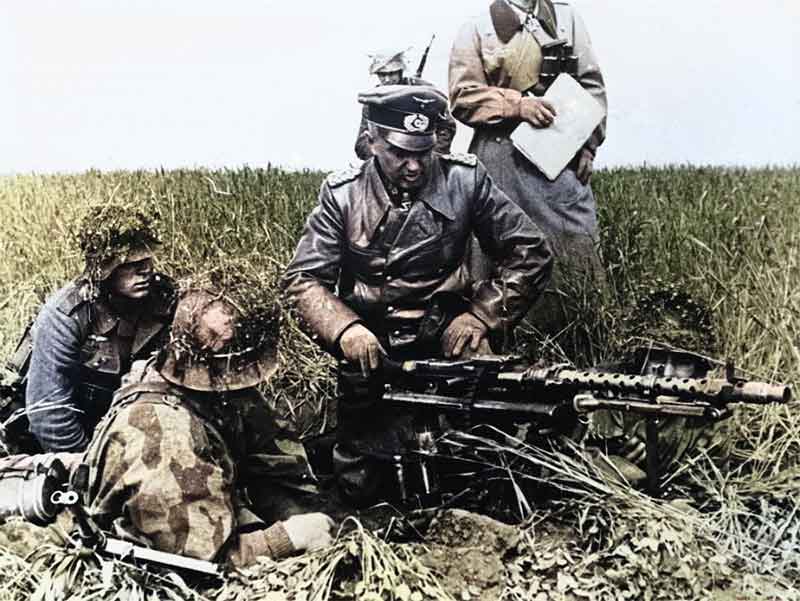
Delegating the diminishment of the Armia Krajowa in Warsaw to the SS, Model redeployed two Panzer divisions to launch a counter-offensive against the Magnuszew bridgehead and employed IV SS-Panzerkorps to reinforce breaches in his line north of Warsaw. The OKH dispatched Model 12 of the Wave 29 Volksgrenadier Divisions, which he utilized to reconstruct his devastated forces. Remarkably, by mid-August, Model had established a new, more robust line along the Vistula-Narew front, which would endure for the subsequent five months. Model exhibited no remarkable feats; his primary achievements included maintaining composure, exhibiting a relentless readiness to sacrifice blocking units for time, and showcasing the agility required to capitalize on transient opportunities.
World War II - The “Miracle in the West”, August-November 1944
In recognition of his achievement in restoring the front in central Poland, Model was summoned to Hitler's Wolfsschanze headquarters on 15 August 1944, where he received the Third Reich's highest honor—the Knight's Cross with Oak Leaves, Swords, and Diamonds. Subsequently, Hitler informed him that he had a new task for his miracle worker. Within two months of the Allied invasion in Normandy, the German forces in France were suffering significant attrition, and a collapse of the front was imminent. Hitler had lost faith in Generalfeldmarschall Günther von Kluge, the current Oberbefehlshaber West, whose defeatist demeanor was as apparent as his incapacity to halt the Allied progression.
Hitler designated Model as both Oberbefehlshaber (commander-in-chief) West and commander of Heeresgruppe B, instructing him to “establish a new western front as far forward of the Seine-Yvonne line as possible.” Despite lacking reinforcements for Model, Hitler demonstrated unexpected reason by permitting Heeresgruppe G to retreat from southern France.
Upon Model's arrival at the Oberbefehlshaber West headquarters in Chateau de La Roche Guyon on the evening of 17 August, he discovered that, as per usual, the situation was dire and swiftly deteriorating into catastrophe. The Canadian First Army nearly encircled AOK 7 and 5. Panzerarmee (PzAOK 5) within the Falaise Pocket, while George S. Patton's Third US Army advanced largely unopposed through the Loire Valley. In southern France, Allied landings rendered Heeresgruppe G's situation equally dangerous. Despite issuing a characteristically rash directive to subordinate units to hold their positions at all costs—mainly to demonstrate his “iron resolve” to Hitler—Model promptly initiated efforts to salvage Heeresgruppe B by commanding its withdrawal to the Seine River and instructed Heeresgruppe G to retreat to Dijon.
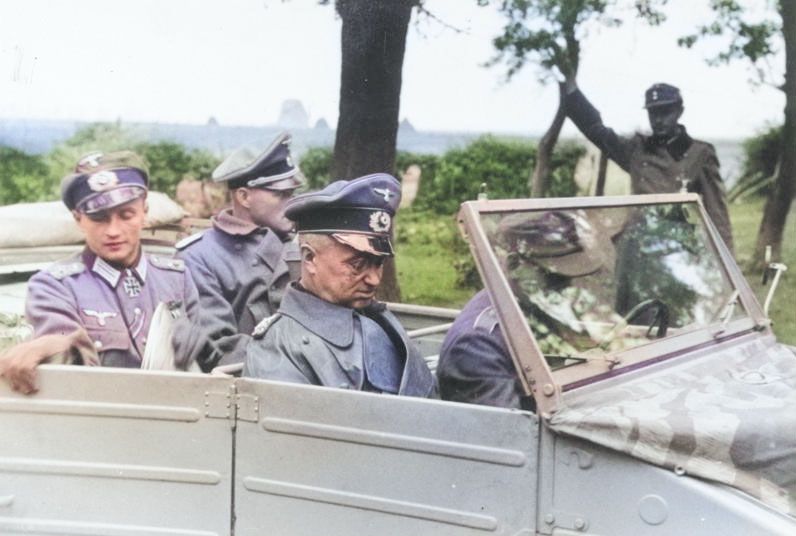
Consistently, he entered his staff car the following morning and proceeded to the front, establishing a tactical headquarters at Fontaine l'Abbe near the Falaise Pocket. Model prioritized preserving the premier armored units, especially the II SS-Panzerkorps, which he deployed to launch a counterattack against the Polish 1st Armored Division, obstructing the sole remaining escape route from the Falaise Pocket. Despite the Allies encircling the Falaise Pocket on 21 August, Model successfully facilitated the evacuation of a minimum of 40,000 seasoned troops.
Following closely behind, Allied forces progressed toward Paris, prompting Model to evacuate his headquarters at La Roche Guyon as the US 79th Infantry Division commenced its crossing of the Seine. Model abstained from deploying his limited remaining forces to defend Paris, yet intentionally employed his Schild und Schwert tactics to impede the Allied advance. Allied forces continued to advance into Paris, leading to the surrender of the German garrison on 25 August. The remnants of the disintegrated Heeresgruppe B retreated chaotically toward Belgium and the German frontier.
In contrast to Poland, Model lacked armored reinforcements, and his only remaining force was General der Infanterie Gustav von Zangen's weak 15. Armee (AOK 15), consisting of six subpar infantry divisions stationed along the Channel coast. Initially, Model anticipated that Zangen's divisions could establish a new front along the river Somme; however, Model's adversaries possessed significant advantages in mobility, intelligence, and air superiority, enabling them to operate more swiftly than the Wehrmacht.
Lieutenant-General Omar Nelson Bradley used intelligence from ULTRA intercepts to direct the First US Army into a pincer maneuver, which led to the death or capture of an additional 28,500 of Model's forces in the Mons Pocket. As Model retreated to a new headquarters near Liege, his situational awareness declined swiftly; his communications with the remaining forces were so impaired that he had insufficient knowledge of their positions or those of the enemy.
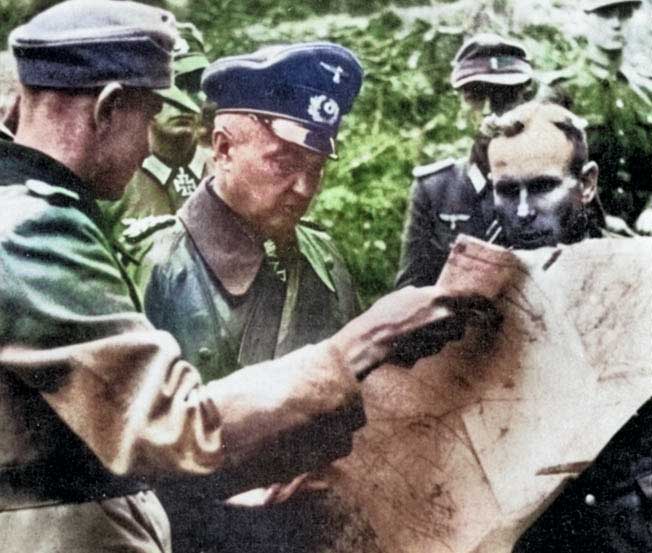
The genuine crisis occurred during the initial week of September 1944. Prior to the repositioning of Zangen's static divisions to establish a new front along the Albert Canal, the British XXX Corps penetrated an almost unguarded Belgium and liberated Brussels on 3 September. On the following day, the British 11th Armored Division executed a 105 km (65 mile) advance to seize the crucial port of Antwerp, which nearly encircled Zangen's forces on the coast. At that juncture, only the isolated 719th Infantry Division and a Dutch SS brigade obstructed the British XXX Corps from advancing toward the Ruhr.
As his command encountered total disaster, Model's fortune persisted due to a convergence of adversarial errors and zealous subordinates. The British 11th Armored Division halted in Antwerp rather than capturing two adjacent bridges over the Albert Canal. The commander of the 719th Infantry Division capitalized on the opportunity, demolishing both bridges and establishing a weak defense along the canal. Lieutenant General Kurt Chill successfully established an additional Kampfgruppe of survivors at the eastern terminus of the canal. Upon the British resumption of their advance two days later, the German defenses along the canal remained intact.
The abrupt loss of Brussels and Antwerp provoked a momentary panic within the Wehrmacht, affecting units fleeing in terror and reaching the upper levels of command. Model's confidence was significantly undermined by this news, prompting him to inform the OKW that he possessed nearly no forces remaining to establish a new front and required a minimum of 30 additional divisions. However, the OKW lacked additional divisions to deploy. During a conference at Wolfsschanze, Göring informed Hitler of his intention to allocate six regiments of Fallschirmjäger trainees and 10,000 unemployed Luftwaffe ground personnel to Model, thereby establishing the 1. Fallschirm-Armee to defend Holland. Colonel General Kurt Student, a favored Luftwaffe general of Hitler, would oversee the new formation.
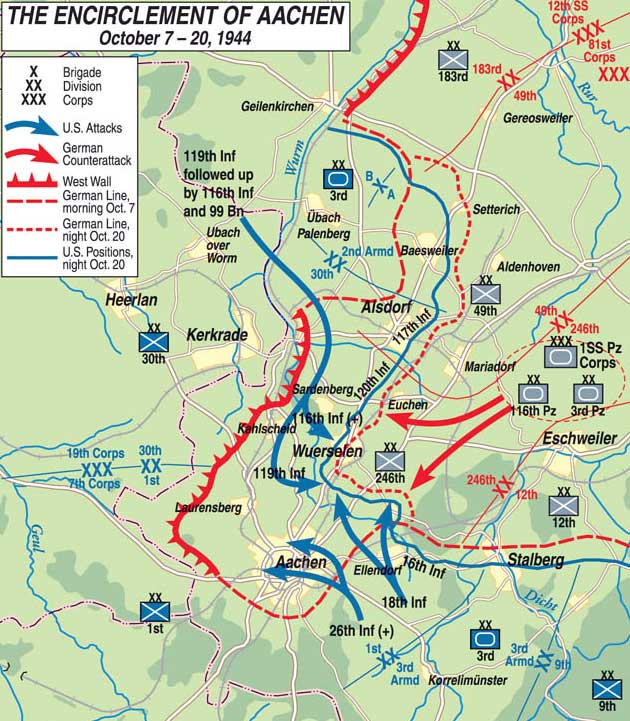
Notwithstanding these grandiose assurances, Model recognized that he would still possess a limited number of troops to defend either Holland or the German border for at least another month. On 8 September, the British successfully established a bridgehead across the Albert Canal, and Student's fragile command was unable to sustain itself for an extended period. By evacuating 86,000 troops from the isolated AOK 15 across the Scheldt Estuary, Model capitalized on the British inability to leverage their success at Antwerp, bolstering Student's defenses and halting the British advance into Holland. Bernard Montgomery's failure to seize the Beveland Isthmus near Antwerp, which allowed AOK 15 to escape, was a crucial mistake that aided the German resurgence. Consistently, Model prioritized front-line intelligence, assuming that the British would imminently initiate a significant offensive into Holland to circumvent the Ruhr, likely utilizing airborne landings.
To the astonishment of the Germans, Bernard Montgomery suspended most of his forces for more than a week to recover, resupply, and re-equip. On 11 September, Model moved his headquarters to the Tafelberg Hotel in Oosterbeek, near Arnhem. Despite the First US Army's vanguard arriving at the German border near Aachen on the same day, Model identified Montgomery as the most pressing threat and relocated his headquarters to a position from which he could oversee the conflict in Holland.
He decided to relocate II SS-Panzerkorps to the Arnhem region, where it could serve as a constrained mobile reserve during its reconstruction. Through either intuition or fortuity, Model had made choices that would inhibit the Allies from concluding the war in 1944. Hitler relieved Model's responsibilities by reinstating Generalfeldmarschall Gerd von Rundstedt, allowing Model to focus solely on Heeresgruppe B while Colonel General Johannes Blaskowitz's Heeresgruppe G secured Alsace-Lorraine.
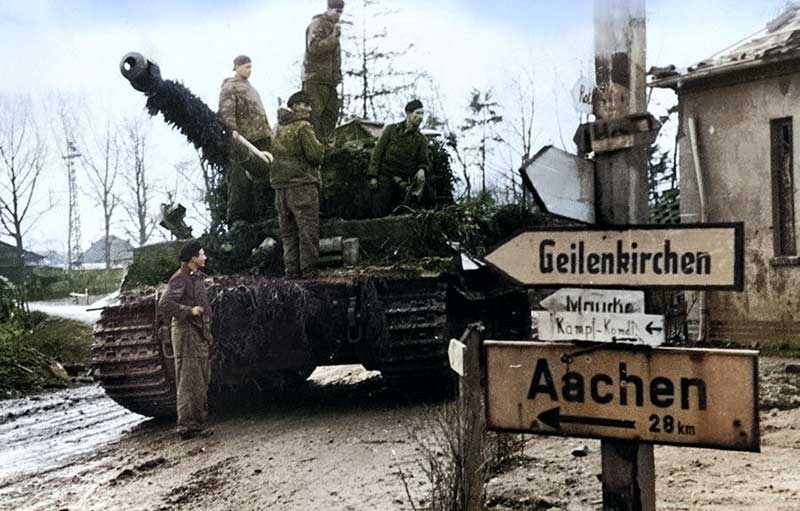
As a significant confrontation unfolded in Holland, Model also needed to monitor the German frontier between Aachen and the Hürtgen Forest, where Hodges' First US Army had already engaged by 13 September. Only remnants of AOK 7 defended the Westwall, forcing Model to deploy his limited armor and infantry reserves to prevent the encirclement of Aachen. The overly cautious Hodges had to abort the offensive just as Model's line was about to collapse due to the heightened German resistance, supply challenges, and extreme weather. Model utilized the break to strengthen this sector with Volksgrenadier units and to establish extensive minefields.
On 17 September, Montgomery initiated Operation Market Garden, deploying three airborne divisions along the Eindhoven-Nijmegen-Arnhem corridor to capture bridges that would enable XXX Corps' tanks to circumvent the Westwall defenses. Model was astonished when the British 1st Airborne Division commenced landing within 5 kilometers (3 miles) of his headquarters at the Tafelberg Hotel, forcing an urgent evacuation. For a brief period, it appeared that Montgomery would dismantle Model's fragile defenses and achieve a significant breakthrough. Once more, Model's luck kept going thanks to his enemies' arrogance; Allied intelligence not only missed the repositioning of II SS-Panzerkorps to Arnhem, which made the British landing fail, but they also let a copy of the Allied strategy get stolen on the first day, which showed Model that destroying the Nijmegen Bridge would ruin Montgomery's whole operation.
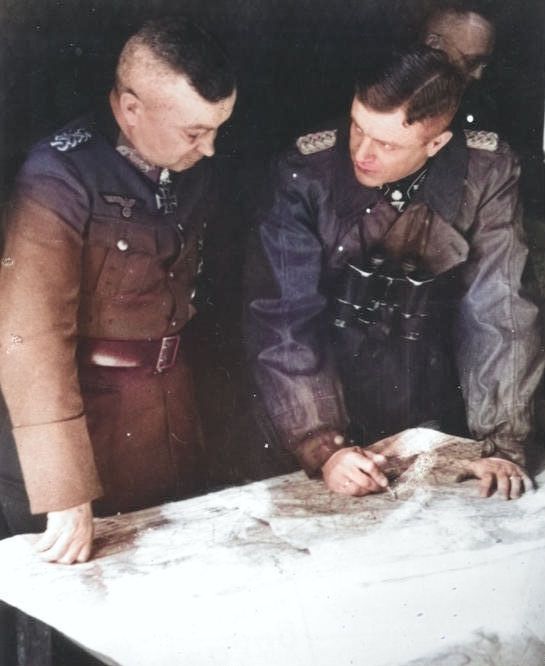
The lengthy attempts of the XXX Corps to advance along the primary route from Eindhoven allowed Model to decisively defeat the British at Arnhem while fortifying defenses at Nijmegen. Model committed an uncommon tactical error by opting not to demolish the Nijmegen Bridge, as he desired it to remain intact for a potential German counter-offensive. The British and Americans successfully seized the bridge; however, they remained unable to connect with the encircled British paratroopers at Arnhem. Montgomery's strategy for a swift encirclement of the Ruhr had disintegrated, forcing him to abandon his bridgehead along the Lower Rhine. Model secured another defensive triumph, vanquishing Montgomery and causing over 13,000 casualties among the Allies.
Just as Model had halted Montgomery's progress, Hodges' renewed assaults on Aachen and the Hürtgen Forest forced him to refocus his attention. Model engaged in an intense three-week struggle with his unequal units to prevent the US VII and XIX Corps from encircling Aachen, successfully delaying the American schedule significantly. Ultimately, Hodges' forces successfully encircled Aachen, leading to the city's capitulation on 21 October. Nevertheless, Model achieved a consoling victory in the extended two-month engagement for the Hürtgen Forest, where he skillfully deployed his constrained infantry, artillery, and engineers to annihilate four American divisions.
Hodges had yet to secure the forest. On 16 November, when Hodges initiated a multi-corps offensive to capture the dams on the Roer River, Model mounted a persistent defense, postponing the Americans' advance for an additional three weeks. Early December saw a halt to Hodges' offensive before it even reached the dams. In total, Model's defense of the Westwall resulted in 57,000 casualties for the First and Ninth US Armies and the destruction of 650 tanks, despite significant German losses as well. Following three months of relentless crises, Model ultimately achieved stability at Heeresgruppe B's front. The battles of Arnhem and the Hürtgen Forest collectively constituted significant defensive triumphs that deprived the Allies of momentum and contributed to the resurgence of German front-line morale.
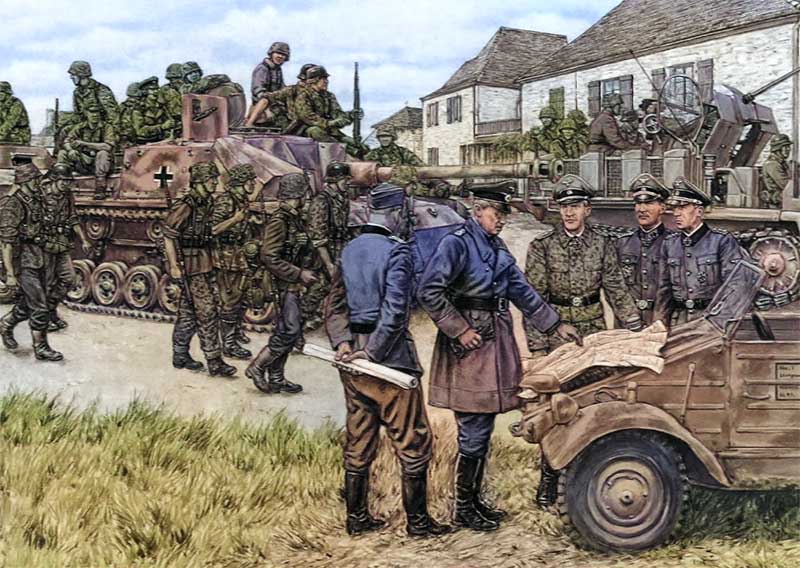
Following his escape from the British airborne landings near his command at the Tafelberg hotel in Oosterbeek, Model proceeded to SS-Obergruppenführer Wilhelm Bittrich's headquarters in Doetinchem, east of Arnhem, where he assumed direct control of the conflict. Model had previously obtained a copy of the Market Garden plan from an Allied glider, which provided him with exceptional insight into the enemy's objectives. Capitalizing on this opportunity, Model promptly commenced issuing directives to Bittrich's II SS-Panzerkorps that would ensure the failure of Market Garden. He instructed SS-Gruppenführer Heinz Harmel, commander of the 10th SS Panzer Division “Frundsberg,” to secure the Nijmegen Bridge against the American 82nd Airborne Division while SS-Obersturmbannführer Walther Harzer's 9th SS Panzer Division “Hohenstaufen” repelled the British landings at Arnhem. This scene depicts Model immediately upon his arrival, engaging in discussions with Bittrich, Harmel, and Harzer while making crucial tactical decisions as German troops advance in the background towards Arnhem. Model and Bittrich successfully organized mixed Kampfgruppen comprising nearby Waffen SS, Army, and Luftwaffe units and deployed them to counter the British airborne landings at Arnhem.
World War II - Wacht am Rhein, December 1944 to January 1945
In December 1944, Hitler resolved to restructure the command hierarchy on the Western Front. Model kept control over Heeresgruppe B and was solely responsible for the defense of the northwestern German border. They established a new Heeresgruppe H to defend Holland, while Heeresgruppe G continued to defend the southern German border that extended to Switzerland.
On 22 October, Model and Runstedt received initial information about the counter-offensive plan known as Wacht am Rhein. They also discovered that they would need to engage in the autumn defensive battles with the barest minimum of forces while the OKW dispatched 16,000 replacements to reinforce divisions for the impending offensive. Considering the deteriorated condition of the Wehrmacht in late 1944, neither Model nor Rundstedt were optimistic about the likelihood of executing a successful large-scale counteroffensive. Moreover, fifty percent of the fuel allocated by the OKH for Wacht am Rhein was expended during the combat along the Westwall in October–November 1944; Model and Rundstedt recognized that insufficient reserves remained to achieve significant objectives, such as Antwerp. Both opted to utilize Germany's remaining armored reserves for localized counterattacks to destabilize the Allies.
Model formulated a counter-offensive strategy known as Operation Herbstnebel (Autumn Mist), with the objective of initiating an assault through the Ardennes to disrupt the First US Army, and then executing a northern maneuver to encircle American troops near Aachen. Both Rundstedt and Model sought a “small solution”, limiting operations to the east of the Meuse and focusing on the destruction of certain vulnerable US infantry divisions. Hitler acknowledged that restricted counter-offensives would merely postpone the unavoidable Allied triumph, and, relying on his “gambler's luck,” he was convinced that Model could achieve a miraculous outcome.
Despite Model's lack of involvement in Wacht am Rhein development, Hodges appointed him as the operational commander for the counter-offensive, which aimed to overwhelm the unsuspecting VIII Corps of Hodges' First Army in the Ardennes Forest and subsequently advance to reclaim the crucial port of Antwerp. Bradley and Hodges resolved to designate the Ardennes sector as a “rest area” for divisions fatigued by combat in the Hürtgen Forest; however, the four divisions in VIII Corps were compelled to maintain a 145 km (90 mile) wide front without substantial tactical reserves.
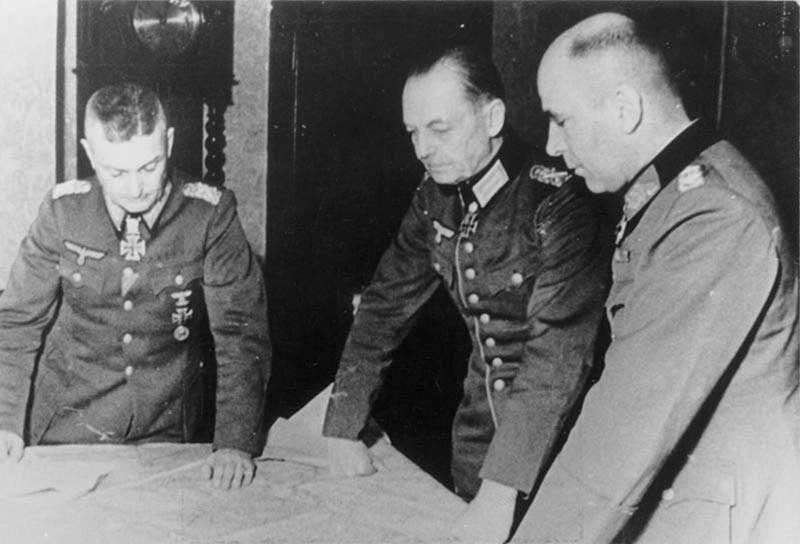
Bradley and Hodges overlooked signals from VIII Corps regarding a potential German counteroffensive in the Ardennes, resulting in the First Army's unpreparedness for this eventuality. To dismantle VIII Corps, Model was assigned the newly established 6. Panzerarmee (PzAOK 6) under SS-Oberstgruppenführer Josef Dietrich, including four reconstituted SS-Panzer divisions, to lead the offensive.
The First US Army was completely unprepared when the offensive commenced on December 16. Despite delays and unforeseen significant resistance on the northern front, the Panzer divisions achieved certain successes in the initial stages of the offensive by inflicting significant casualties on multiple American divisions and encircling 12,000 US troops at Bastogne. As customary, Model did not stay at his headquarters but instead visited his troops to assess the front-line conditions.
When PzAOK 6 became entangled in a significant traffic jam on the congested roads outside St Vith, Model personally directed traffic to alleviate the obstruction. On the contrary, Bradley spent that evening in Paris engaging in a game of bridge with Eisenhower, while Hodges did not respond. “Wacht am Rhein's” momentum diminished swiftly as Allied reinforcements surged into the Ardennes, while the German offensives depleted their fuel reserves before reaching the Meuse. Accepting his inability to access the Meuse, Model persisted in commanding assaults on Bastogne until 3 January 1945 in the pursuit of securing a final tactical triumph; however, his forces failed to capture the town.
Recognizing the inevitability of an Allied counteroffensive aimed at severing the German salient, Model pled Hitler to permit Heeresgruppe B to retreat to the Westwall; however, the Führer was reluctant to grant any additional territory. Following a short respite, the First and Third US Armies commenced assaults on the peripheries of the German “bulge” in early January 1945, and by the month's conclusion, Model's forces had returned to their initial positions. The Ardennes battle cost the Germans over 80,000 lives and half their tanks, both irreplaceable. German morale began to decline, and neither impassioned speeches nor enthusiastic commanders could conceal the reality of Germany's defeat in the war.
World War II - The Last Measure, February-April 1945
Following the defeat in the Ardennes, the subsequent months held a tragic inevitability for Germany. Hitler prohibited Model from withdrawing his defeated troops from the Westwall and retreating behind the Rhine, thereby exposing them to the impending Allied offensives that commenced in February 1945. However, Hitler removed Heeresgruppe B from PzAOK 6 and dispatched it to Hungary, which critically undermined Model's prospects of replicating the defensive successes of autumn 1944. Additionally, the OKH declared on 1 March that there would be no further reinforcements for Heeresgruppe B, thereby limiting Model's alternatives to primarily static defense.
Due to the depletion of most of the final fuel and ammunition reserves in the Ardennes, Model's remaining Panzer units had limited mobility, and his artillery, which had previously been the cornerstone of his defensive strategies, could only discharge four rounds per battery daily. Exploiting Heeresgruppe B's vulnerability, the Canadian First Army expelled the 1. Fallschirmarmee from the Reichswald; subsequently, the Ninth US Army initiated Operation Grenade against Model's vulnerable AOK 15 on 23 February. By 3 March, Canadian and American forces had united, encircling 52,000 German soldiers on the western bank of the Rhine.
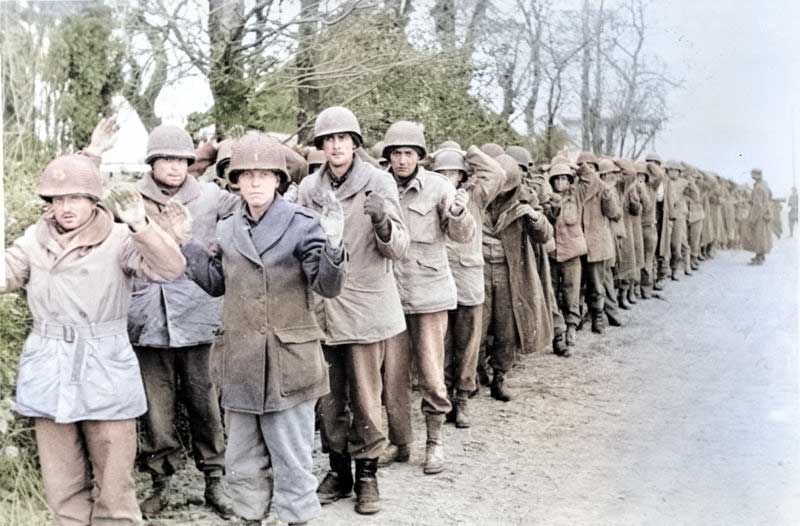
On 2 March, the US First and Third Armies launched Operation Lumberjack, decisively neutralizing the remaining German forces west of the Rhine along Model's front. Despite Hitler's prohibition against Model withdrawing any of his threatened divisions across the river, Model disregarded the order and successfully salvaged several units. When the American 9th Infantry Division seized the Ordensburg Vogelsang, a specialized Nazi Party training center in the Eifel, Hitler became infuriated and ordered the court-martial of the commander of LXXIV Armeekorps and several of his subordinates for the loss of this facility. An army-level trial swiftly exonerated the officers; however, Hitler insisted that Model, as the senior accountable officer, should reinstate the proceedings.
Upon meticulous examination of the evidence, Model exonerated the accused officers. When Hitler attempted to refer the officers to a special tribunal, which would likely have resulted in a firing squad, Model exercised his authority to obstruct this initiative. Model once again exhibited his readiness to confront the Führer while maintaining his allegiance to his subordinates. Shortly thereafter, Model was astonished to discover the British firebombing of his hometown, Dresden, on the night of 13-14 February. For several days, Model was uncertain about the fate of his wife and daughter in the conflagration that claimed 22,000 lives in the city. Two days later, when summoned to Berlin for a conference with the Führer, Model sought permission to visit the city in search of his family, but Hitler denied the request. Model dispatched his adjutant, Colonel Pilling, who located Model's wife and daughter and facilitated their evacuation to Model's brother's residence in Mühlhausen.
Preoccupied with military tribunals and the bombing of Dresden, Model committed one of his rare tactical errors as the First US Army advanced toward the Rhine, resulting in significant consequences. Convinced that Hodges' forces were advancing toward Bonn, Model instructed his retreating units to consolidate there, disregarding the likelihood that the Americans might target the bridge at Remagen instead. Remarkably, the US 9th Armored Division seized the bridge at Remagen intact on 7 March, undermining any expectation that the Rhine would serve as a barrier against the Allied offensives.
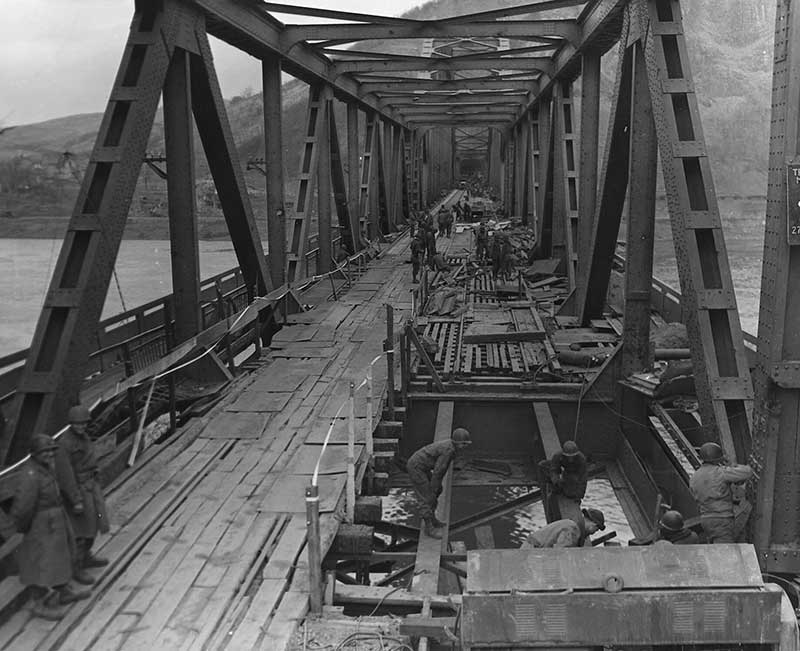
Model tried to encircle the American bridgehead, but his Panzer units suffered excessive depletion and lacked sufficient fuel for a successful counter-offensive. He instructed AOK 15 to establish defenses along the southern bank of the river Sieg to foil American advances directly into the Ruhr. Following the catastrophe at Remagen, Hitler dismissed Rundstedt once more and appointed Generalfeldmarschall Albert Kesselring.
On 24 March 1945, Montgomery's 21st Army Group commenced the crossing of the Rhine on the right flank of Heeresgruppe B, while the Ninth US Army initiated a maneuver to create a rift between Heeresgruppe B and Heeresgruppe H in the Netherlands. Model commanded PzAOK 5 to establish a defense along the Lippe River and Dortmund-Ems Canal against the Ninth US Army. The following day, the First US Army breached the Remagen bridgehead on Model's left flank. The First US Army nearly obliterated AOK 15, creating a significant breach between Heeresgruppe B and Heeresgruppe G, through which two US corps advanced.
Within days, American forces encircled the Ruhr, and Model lacked the necessary reserves to prevent their convergence. Model favored the evacuation of the Ruhr and a strategic withdrawal eastward to maintain resistance in the Harz Mountains; however, Hitler prohibited retreat and declared Germany's industrial core as “Festung Ruhr.” As a flawless military officer, Model complied and repositioned PzAOK 5 to safeguard the southern flank of the Ruhr along the Sieg River; however, the Americans, possessing absolute air superiority and a significant mobility advantage over the Germans, swiftly maneuvered around the Ruhr.
Intense combat near Paderborn, the First and Ninth US Armies converged at Lippstadt on the afternoon of 1 April. Nearly the entirety of Heeresgruppe B, comprising Model and 14 divisions, was encircled within the 130 km (80 miles) by 95 km (60 miles) Ruhr Pocket. Only about 75,000 of the approximately 370,000 German military personnel in the Ruhr Pocket had weapons. Fuel and ammunition reserves were minimal. Due to Heeresgruppe B's insufficient strength to escape the encirclement, Kesselring casually informed Model that the 11. Armee (AOK 11), regrouping in central Germany, would initiate a relief operation in two weeks; however, Model recognized this as a delusion. Once the Americans encircled Heeresgruppe B, they satisfied themselves by gradually narrowing the encirclement from the north and south, while their armored vanguards advanced eastward to meet the Soviets at the Elbe River.
Initially, Model's forces mounted vigorous resistance along the Dortmund-Ems Canal and the River Sieg from April 4 to 9 and even executed a final counter-offensive against the Ninth US Army near Dortmund. Morale within the pocket deteriorated significantly once it became evident that Germany was being overwhelmed. Model's staff attempted to convince him to initiate surrender negotiations with the Allies, but he refused to entertain the idea. By 11 April, the Ninth US Army seized Essen, leading to a decline in German resistance.
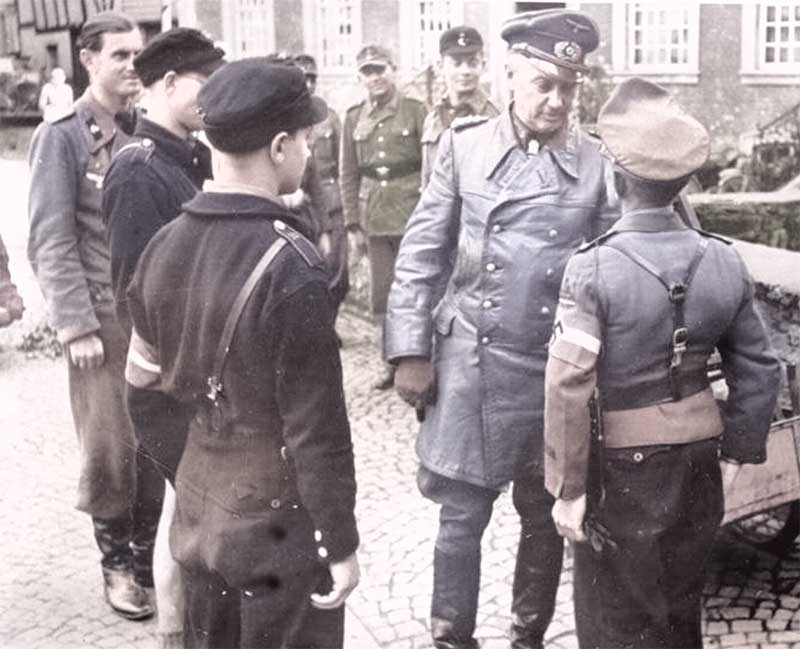
Two days later, morale deteriorated in the Ruhr Pocket, and Model abruptly lost communication with the majority of his subordinate units and commanders. On 14 April, Zangen capitulated AOK 15. As his command collapsed, Model resolved to disband Heeresgruppe B on 15 April, directing subordinate commanders to independently determine whether to attempt an eastern breakout or to capitulate. He directed the Volkssturm to relinquish their uniforms and return home. Major-General Matthew Ridgway, the commander of the American XVIII Airborne Corps, sent a personal appeal to Model under a truce, requesting his surrender on that same day. Model stated that he remained obligated to his oath to the Führer and declined to entertain the proposal. Ultimately, 317,000 German soldiers from the Ruhr Pocket, including 24 generals, capitulated.
After the departure of Heeresgruppe B, Model evaded capture for the subsequent four days with a small convoy comprising a Sd. Kfz. 234 heavy armored vehicle, an Opel Blitz radio truck, and a DKW sedan. He aspired to evade American lines to access the Harz Mountains, yet this proved unfeasible. Additional small contingents of German forces remained armed in the Ruhr Pocket, and Model encountered one such group, whose squad leader inquired about their course of action. Model stated, “Return home, gentlemen; our conflict has concluded,” then shook everyone’s hand and wished them well.
Insinuating that his old friend Friedrich Paulus should have committed suicide at Stalingrad instead of surrendering to the Soviets for a show trial, Model had already resolved to take his own life. Lieutenant Colonel Roger Michael, his intelligence officer, accompanied Model alone in the woods near Wedau on the morning of 21 April 1945. He informed Michael, “You may bury me here,” then proceeded solitarily into the woods, drew his firearm, and concluded his distinguished 36-year military career with a solitary shot to the head.
Walther Model and the Opposing Commanders
Generals Georgy Zhukov, Ivan Konev, and Konstantin Rokossovsky
Walther Model predominantly engaged in combat against the Soviets during the war, facing principal adversaries such as Generals Georgy Zhukov, Ivan Konev, and Konstantin Rokossovsky, who were among the most proficient leaders of the Red Army. All three Soviet adversaries were 5 to 6 years junior to Model and lacked the extensive experience he had acquired before engaging them in combat. Zhukov, with his extensive experience in operational planning at Stavka and his renowned battlefield victory over the Japanese at Khalkhin Gol in August 1939, was undoubtedly Model's most formidable adversary.
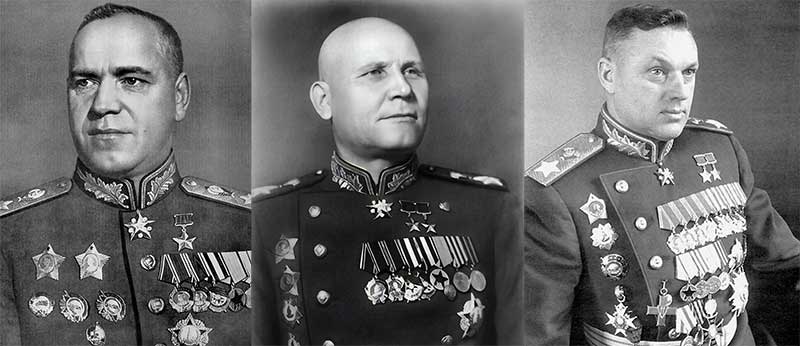
Zhukov could be obstinate in persisting with attacks that had evidently failed, resulting in significant losses for the Red Army during his confrontation with Model in the “Rzhev meatgrinder.” Conversely, Model endeavored to mitigate losses among his forces during Operation Zitadelle, and when it became evident that a breakthrough was impossible, he refrained from committing additional troops to futile assaults. Rokossovsky demonstrated considerable resilience in defense during the battles of Moscow and Kursk; however, he was also inclined to deploy his armored forces prematurely in offensive operations, allowing Model to respond effectively with his own constrained reserves and thereby evade encirclement. Although all three Soviet commanders managed to repel Model's forces during the 1942-44 campaigns, they never succeeded in encircling and annihilating any significant German units under his command.
Field Marshal Bernard Montgomery, Generals Omar Bradley and Courtney Hodges
In his final year of the war, Model faced adversaries on the Western Front, including Britain's Field Marshal Bernard Montgomery and American Lieutenant Generals Omar Bradley and Courtney Hodges. Montgomery was undoubtedly the most seasoned and adept of Model's Allied adversaries, having acquired substantial combat and staff experience during World War I, which transformed him into a consummate professional soldier. Montgomery distinguished himself in North Africa and subsequently in Italy as the commander of the Eighth Army, and by the summer of 1944, he had acquired a comprehensive understanding of German defensive strategies.
Equipped with this experience, ULTRA decrypts, air superiority, and an ample supply of American-built tanks, Montgomery demonstrated the ability to execute set-piece offensives that could erode even the most formidable German defenses. Nevertheless, success rendered Montgomery imprudent in his confrontation with Model in the autumn of 1944, and he was sluggish to comprehend that the Wehrmacht's resolve remained unshattered. When Montgomery disregarded alerts regarding German armor in Holland, Model promptly capitalized on the chance to decimate the British 1st Airborne Division, prompting Montgomery to adopt a more prudent strategy in the 1945 campaign.
Unlike Montgomery and the Red Army generals, Model's American adversaries were inexperienced novices with minimal combat proficiency. As the commander of the 12th Army Group, Bradley possessed no combat experience prior to 1943 and subsequently had only a brief tenure as a corps commander in Italy and Sicily. Notwithstanding exaggerated assertions by correspondent Ernie Pyle that Bradley was “the GI General,” Bradley lacked Model's capacity to connect with ordinary soldiers and was uninformed about the front-line conditions confronting his troops in the autumn of 1944. Hodges, a West Point dropout, briefly gained recognition as a junior infantry officer during the concluding months of combat in 1918 but primarily established his reputation as a trainer of infantrymen.
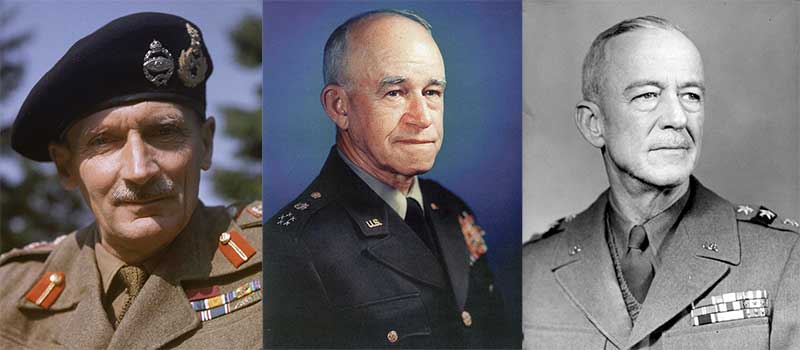
Like Bradley, Hodges reached senior command without enough experience in subordinate roles and failed to develop the combat instincts that Model had developed over two wars. Notwithstanding their infantry qualifications from Fort Benning, neither Bradley nor Hodges grasped the challenges of combat in the Hürtgen Forest and were satisfied to deploy infantry divisions in a fragmented manner, resulting in their annihilation. In the Ardennes, Wacht am Rhein left both men unprepared, resulting in their inability to respond swiftly during a crisis, in stark contrast to Model's conduct at Rzhev. It is likely accurate to assert that Bradley and Hodges were entirely outmatched as military leaders by Walther Model.
Walther Model engaged some of the most formidable commanders from the enemy and is the only general of Hitler's who can claim victory over Zhukov, Montgomery, and Bradley. Despite Model's inability to deliver more than tactical defeats to his adversaries, these setbacks often caused pain and humiliation, demonstrating that he could dismantle the German forces under his command incrementally, without ever vanquishing them.
Inside the Mind of Walther Model
Walther Model confronted Hitler in a manner that few others would, explicitly declining to execute orders with which he disagreed. Walther Model left behind no memoirs and destroyed most of his personal documents in the Ruhr Pocket before committing suicide. Through his actions and documented statements, one can assume considerable insights into Model's perspectives on military leadership. Primarily, he was an exceptionally “hands-on” commander who sought to familiarize himself with his troops, subordinates, and battlefield terrain directly. During the defense of the Rzhev salient, he was acquainted with nearly every battalion commander in AOK 9 and possessed knowledge of the terrain in their respective sectors. He advocated for “Anschauen” (personal inspection) not only to verify the proper execution of his directives but also to ensure adequate resource allocation for mission success.
Leveraging his experience as an adjutant in World War I, he participated in the allocation of replacements to units and the assignment of key officers. This leadership style was regarded as micromanagement by certain German officers; however, Model was prepared to delegate authority once his subordinates had gained his trust. He was indeed fortunate during most of his career from 1942 to 1945 to have subordinates such as Harpe, Viettinghoff, Rendulic, Student, and Bittrich, who were both competent and dependable. Model also embraced front-line leadership, similar to Rommel and Guderian, and conducted daily visits to pivotal sectors to evaluate the capabilities of his troops and monitor enemy activity.
Despite Model's staff struggling to monitor his erratic movements, which occasionally resulted in prolonged communication lapses, he developed exceptional situational awareness and remained unanticipated until the capture of Remagen Bridge in 1945. Model also held a strong conviction regarding “Vorhalten” (prior planning). The effective defense of the Rzhev salient against Zhukov's Operation Mars was not coincidental; Model dedicated weeks to organizing his constrained armor into Kampfgruppen in proximity to the anticipated Soviet assault zones. He once again exhibited his proficiency in Vorhalten during Operation Büffel.
Model meticulously coordinated three elements, now known as battlefield operating systems, to halt Soviet offensives. The initial focus was on intelligence collection and analysis, which he oversaw to enhance his situational awareness and ascertain probable enemy strategies. The second aspect involved counter-mobility initiatives aimed at identifying and obstructing any Soviet progression, relying on the establishment of a continuous front and several rearward switch lines. The third aspect involved centralized fire support, which allowed Model to concentrate its efforts on the most significant threats. Model also recommended incorporating a fourth maneuver, emphasizing the use of tactical reserves for counterattacks and the recovery of lost territory when possible.
Numerous officers in the Ostheer disapproved of Model's advocacy for a continuous front line, favoring the strongpoint strategy most German units employed during the winter of 1941-42. A continuous front line negatively affected the troops during winter, necessitating prolonged outdoor exposure and rendering small units vulnerable to annihilation. A continuous front prevented Soviet units from maneuvering through gaps undetected, making them vulnerable to German artillery fire.
Consequently, troops deployed in a continuous front in squad-sized formations constituted a significantly less attractive target for Soviet artillery compared to company- and battalion-sized strongholds. By routinely visiting his troops, Model guaranteed the implementation of a continuous line and that units constructed sufficient fields, obstacles, and minefields to enhance their survival against Soviet assaults. Model consistently assumed the role of an infantryman, ensuring that his troops conducted aggressive patrols to capture prisoners and gather intelligence on enemy operations, a directive that other senior German commanders frequently neglected. He would never have permitted the "rest area" mentality that Hodges and Bradley endorsed in the Ardennes, as he could not afford to diminish his vigilance.
Model maintained a strong rapport with Hitler and other Nazi officials during his term as a senior commander and did not engage with the resistance. He was indifferent to politics unless it could procure him additional troops. Model was far from being submissive; he was one of the few senior commanders who stood up to Hitler and was willing to defy the Führer's orders when they served his interests. This was demonstrated by his construction of the Hagen Stellung in 1943 and his deliberate use of “scorched earth” tactics in the Ruhr to obstruct resources from the victorious Allies.
A profound sense of German nationalism, his Lutheran faith, and a conviction in his own abilities underpinned Model's personality. Except for the last moments in the Ruhr Pocket, when he recognized the war was useless, Model was an energetic, indefatigable, and aggressive commander. Faced with successive crises from 1942 to 1945, he embraced a “never say die” mentality and remained neither apathetic nor uncertain during tumultuous times. He exhibited personal bravery and sustained five wounds throughout his military career. Model cultivated a sardonic sense of humor as a junior officer in the trenches of World War I, discovering that humor served as an effective mechanism for alleviating tension and conveying to subordinates his composure under duress.
Model exhibited a pronounced tendency toward sarcasm, which he rarely endeavored to disguise from others. Hitler asked Model, during a conference at the OKH in January 1944, where he thought the Allied landing would take place—in the Pas de Calais or in Normandy? Model responded: In Portugal. In contrast to Erich von Manstein, he never ridiculed either the Führer or his commanders in the presence of subordinates. Conversely, Model's optimism and “can-do” mentality occasionally exceeded rational limits, a tendency he exhibited during his service at Heeresgruppe Nord.
Model demonstrated concern for his soldiers; although he would sacrifice rearguards when required, he never regarded his troops as expendable and consistently endeavored to comprehend their circumstances. The ordinary soldiers recognized Model as a capable commander who was proficient in his duties. He possessed the capacity to seize triumph from impending failure, which motivated his forces and gave rise to the adage: “Where Model is present, nothing can go wrong.”
Walther Models’ Life in Words
Walther Model did not survive the war to compose his memoirs; consequently, his legacy was chronicled by his surviving peers and subordinates. People generally regard Model as a skilled tactician and obstinate defensive leader; however, his numerous critics often characterize him as flattering, if not submissive to Hitler, and lacking the operational acumen of Manstein or the charisma of Rommel. Several staff officers asserted that he exhibited rude speech and manners, characterizing him as brutal, cold, and ruthless. Although accepted by certain historians for decades, these subjective evaluations of Walther Model's leadership are, at best, unsubstantiated and, at worst, indicative of bias.
How did his superiors perceive him? Hitler explicitly designated him as “my best field marshal” and “the savior of the Eastern Front.” Model exhibited loyalty, aggression, and effectiveness, traits that appealed to Hitler, who consequently granted him significantly more autonomy than other senior German commanders. Model was the only German commander on the Eastern Front who successfully carried out a significant withdrawal (Operation Büffel) without facing any attacks.
Hitler held in high regard a seasoned front-line combatant like Model, who starkly contrasted with the “Zossen staff types” that Hitler hated within the Generalstab (Zossen was in Berlin where the majority of the OKH/OKW staff operated from two extensive underground bunkers). Josef Goebbels expressed positive remarks regarding Model in his diary, observing that he was the sole general requesting additional political materials from the Propagandaministerium to educate front-line troops. Indeed, Model's forces in the Rzhev salient were likely utilizing Goebbels' propaganda, yet Model understood that such a request would garner favor with the Nazi hierarchy, enabling him to secure priority for reinforcements.
What was the perception of Model among his colleagues and subordinates? Despite Model's brief mention in Panzer Leader (1950), Heinz Guderian acknowledges his “correct deductions” at Kursk and his “courageous” performance in Poland in 1944. Erich von Manstein scarcely referenced Model in “Verlorene Siege” (Lost Victories) (1955), which is unsurprising given that Model succeeded Manstein following his dismissal in March 1944. Friedrich Wilhelm von Mellenthin's publication, Panzerschlachten (Panzer Battles) (1956), provided non-German readers with significant insight into Model's achievements and character; however, Mellenthin had several personal grievances to address.
Mellenthin was a flattering admirer of Manstein and disliked Model's replacement, describing him as “an alert, smart, fiery little man ... and although a soldier of considerable drive and energy, he could hardly be deemed an adequate substitute for Manstein.” Mellenthin, similar to other Generalstab officers, held resentment toward Model's inclination to visit infantry units and engage in tactical details, as well as subjecting his staff to adverse weather conditions such as mud, rain, and snow.
Manstein opted to remain at an elegant chateau, engaging in nightly bridge games with his staff. Mellenthin made no attempt to clarify that he never served on Model's staff. Following Model's death, numerous officers who opposed Hitler and survived to recount their experiences branded him a Nazi due to his unwavering allegiance to the regime. Colonel Günther Reichhelm, who was the assistant operations officer on Model's staff in AOK 9 at Rzhev and subsequently the operations officer of Heeresgruppe B for the final seven months of the war, provided a significantly more insightful evaluation of Model. Despite acknowledging certain flaws of Model, he regarded him as a “compassionate and intelligent leader” and assessed him as “one of the most exceptional soldiers of World War II.”
Generalfeldmarschall Walther Model - Quick Facts
- German Empire (1866-1918)
- Germany - Weimar Republic (1919-33)
- Germany Nazi (1933-1945)
- 3rd Panzer Division (German Wehrmacht 1935-1945)
- 9th Army (German Wehrmacht 1940-1945)
- Army Group B (German Army 1939-1945)
- Army Group Center (German Army 1941-1945)
- Army Group North (German Army 1939-1945)
- Army Group North Ukraine (German Army 1944-1944)
- OB West (Oberbefehlshaber West - Commander-in-Chief West - German Armed Forces 1940-1945)
- XXXXI Panzer Corps (Germany Army 1940-1945)
- WWI (1914-1918)
- Weimar Republic (1918-1933)
- WWII (1939-1945)
- {{#owner}}
- {{#url}} {{#avatarSrc}}
{{name}} {{/url}} {{^url}} {{#avatar}} {{& avatar}} {{/avatar}} {{name}} {{/url}} - {{/owner}} {{#created}}
- {{created}} {{/created}}


